Coniferous trees- can be seen to the arch of an old-time group. The remains of these remains are spread over a stretch of 300 million years. Needles (Pinóphyta) - villages, ships, and evergreen growths, which are settled in cones. The number of growths in the wild looked like growth in all parts of the world. And if it’s like stench with roslins to douse the warm climate with hot water again, then the stench is more important to grow in the peaceful climatic zone.
Scientific classification
Domain – Eukaryoti
Kingdom - Roslini
Viddil – Khvoiny
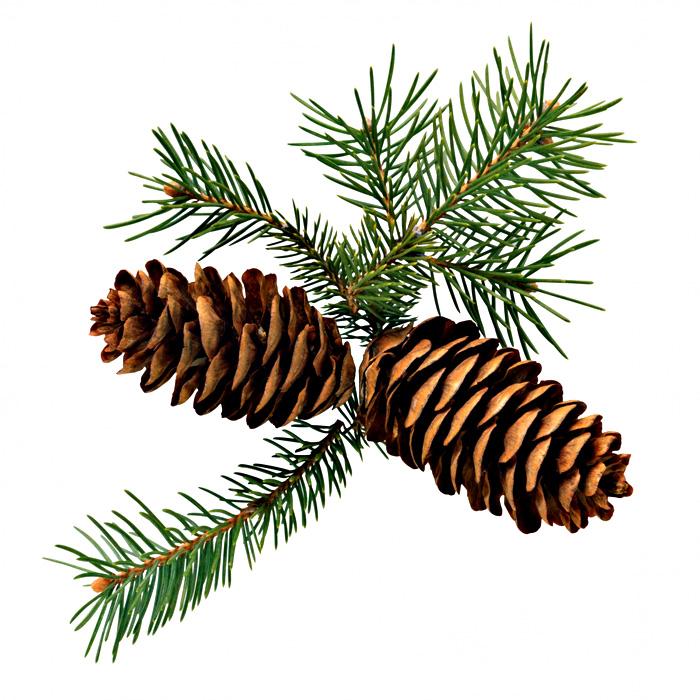
Trees bagatorichni roslini, at some stovbur with needles they make a tree
Vessels - roslins, like in the middle of the ships, which are formed from clitin for transferring water alive speeches.
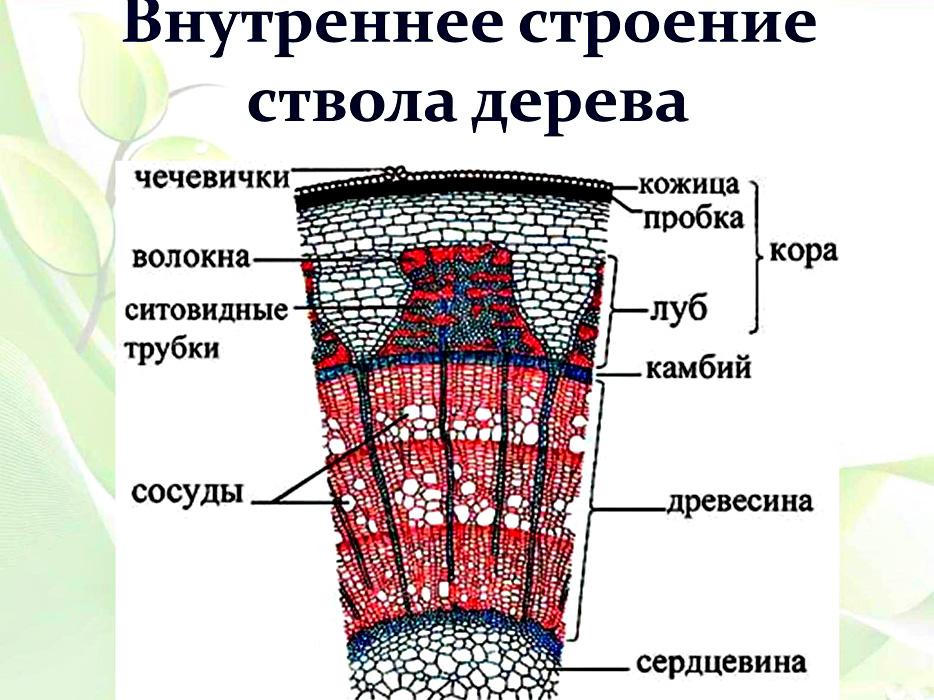
Evergreens are green lines, which do not throw off their leaves with a stretch of fate. The leaf changes step by step, unrecognizable to our eyes. In some coniferous leaves, they change once for a river, and in some times for 45 years, like, for example, in a spinous pine, like growth in Colorado and New Mexico.
Vіddіl coniferous roslin is folded from one class (Pinopsida) Holon roslins. Vіn includes clearly see roslin and ti that died.
For one of the systems of classification, coniferous trees are divided into several orders: cordaitis (wimerli), vynoskієvі (vimerli), voltsієvі (vimerli), pine.
Order - Kordaitovi
behind old-fashioned look the stench was telling the modern conifers of the tree. Tse buli grew out of tight stovburs. Their leaves were linear, 20-50 cm and larger. The organs of reproduction were earrings with female and human cones. Possibly, the flowers of the roslin gave the cob to the mustache coniferous trees.
The author of the painting is Zdenek Burian
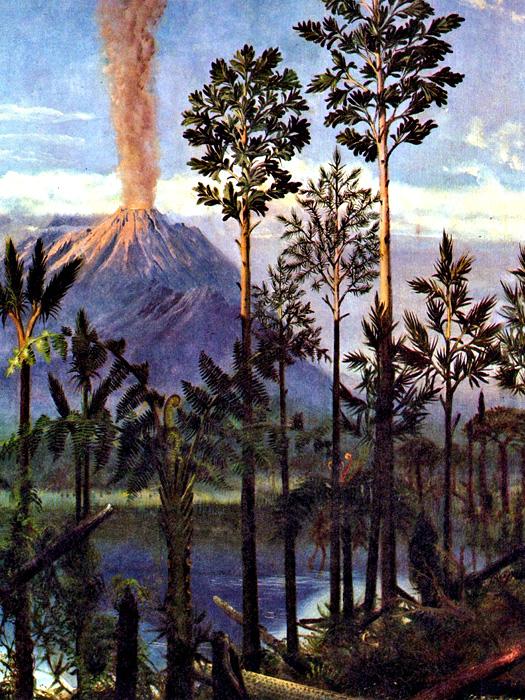
Zdeněk Burian is a Czech artist who painted impersonal paintings of paleontological themes, in which he created prehistoric growths, creatures and people. In this picture, there is a bachimo vimerlia subclass of coniferous trees.
Order – Sosnovi
Pine (coniferous) class includes 6-8 families, 65-70 flats and up to 650 species of roslin.
Wine is subdivided into the following families:
I. Araucarii
Araukaria - this family includes three genera:
1. Agatis is a large tree that has leaf-like needles. Tsei rіd extensions in Australia, on the islands of the Malay Archipelago, in the Philippines, near New Guinea.
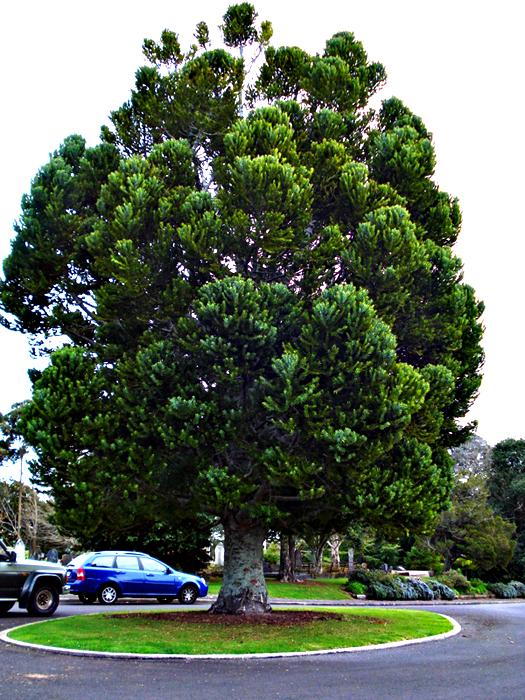
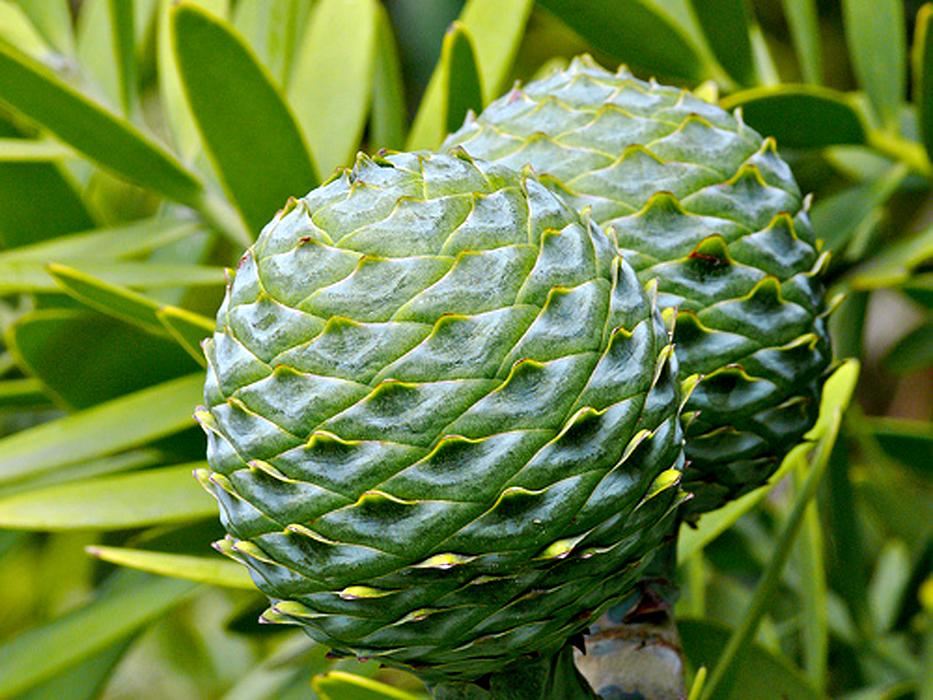
2. Araucaria - temple tree with flat needles. Height can reach 90 meters.
Brazilian araucaria
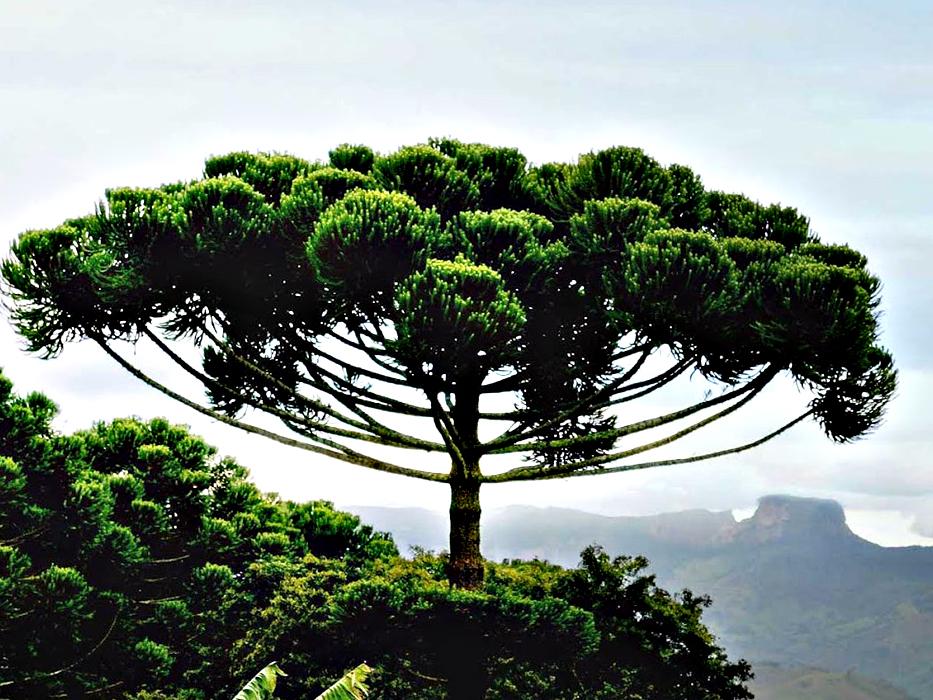
The cone of the Chilean araucaria is important up to 1.5 kg.

3. Wollemia - the oldest growth on earth, listed to the Red Book. I respected the vimerlo doti, the docks did not show David Noble in Australia in 1994. Її height 40 meters. Leaves may be flat with a length of up to 8 cm.
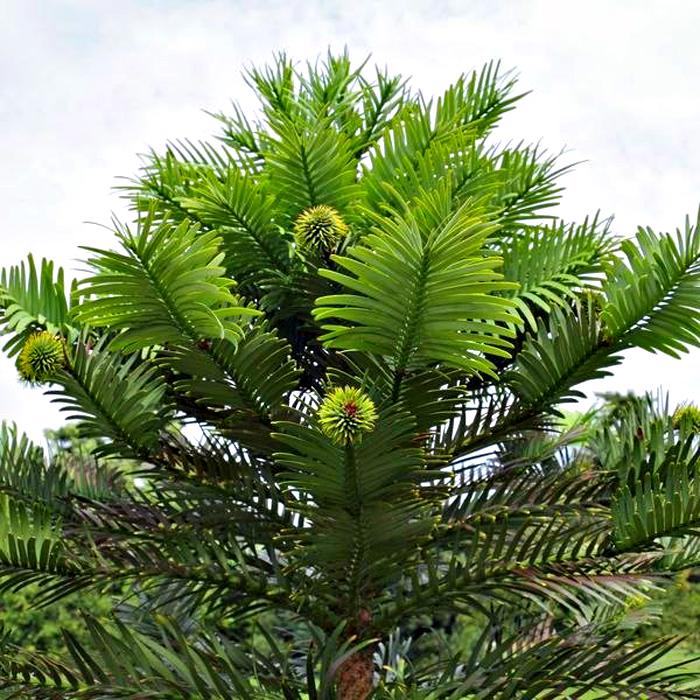
II. Headed yew
This family includes three genera:
1. Golovchatotis - growth in Pivdenno-shіdnіy Asia.

2. Amentotaxus - rіd, especially the presence of earrings in the growth, which hang down, - micro - strobіlіv - cones.

3. Torreya - a number of small evergreen trees, which reach up to 25 m.

III. Cypress
Cypresses - low trees or chagarniki, which creep or upright. This family is divided into 32 genera and 166 species.

IV. Sosnovі
Pine - the whole family consists of 11 slopes and 252 species.
Axis deakі z vіdomih canopy.
Pine
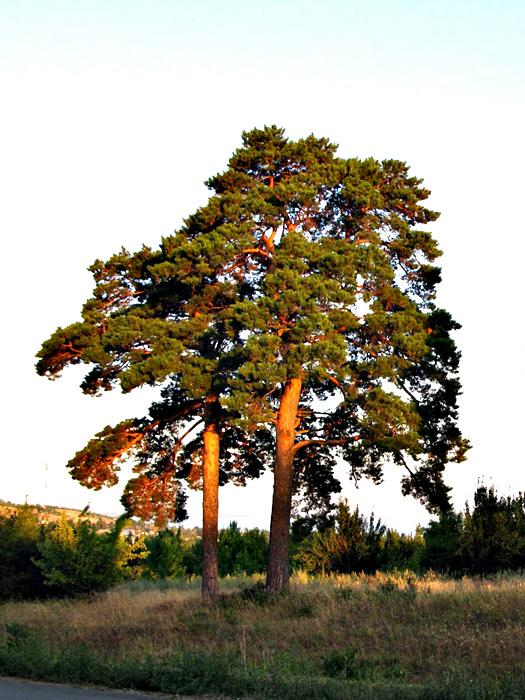
I.I. Shishkin. "On the junction of a pine forest" 1882
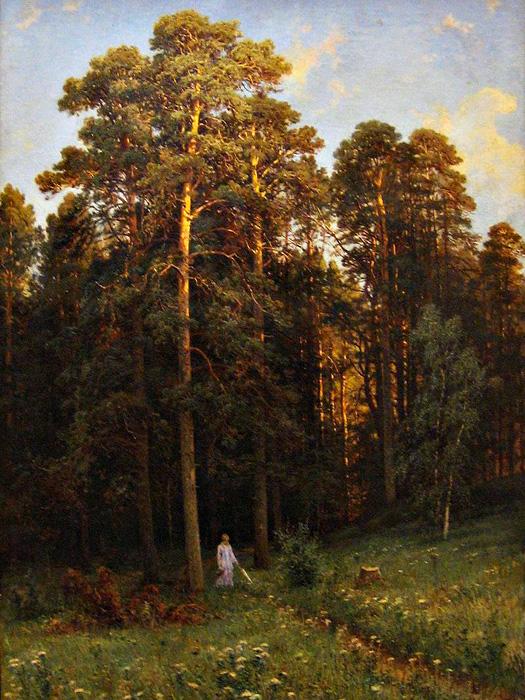
Yalina - evergreen tree(with side crown) curls up to 96 meters.

Cedar - evergreen growth up to 50 meters high.

Modrina - representatives of this family of roslins scrupulously throw off needles for the winter. This tree species is the widest of the Earth. At height they can reach up to 50 meters for friendly minds.
Gold modryn
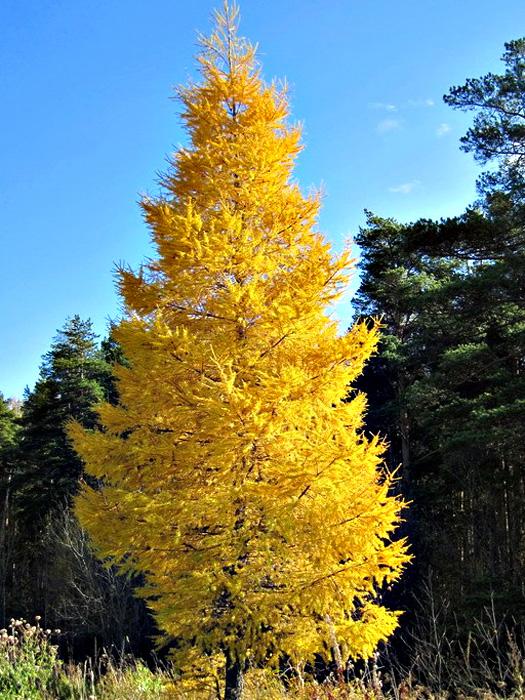
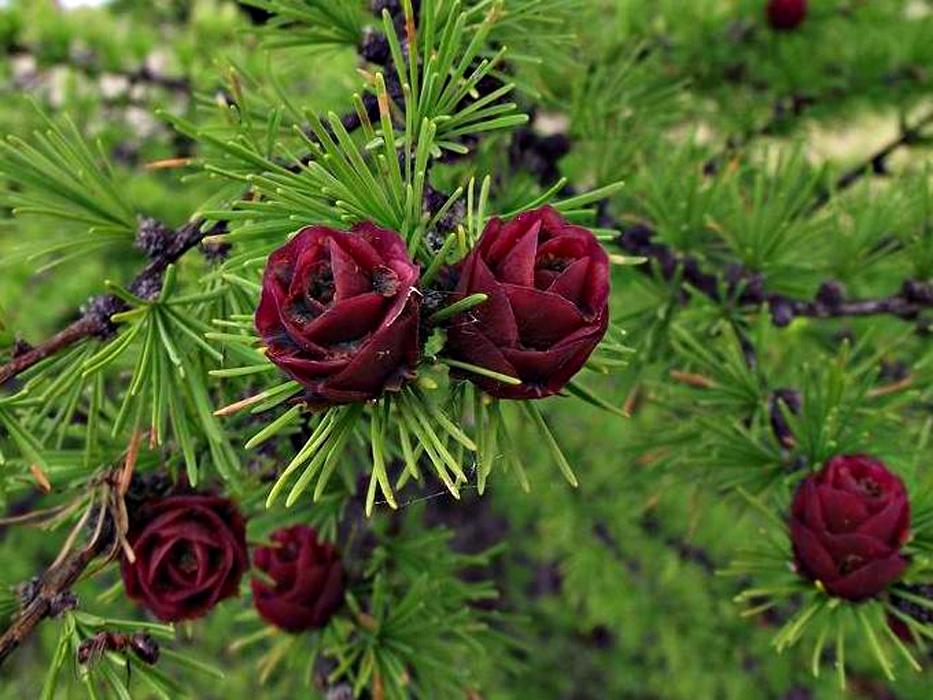
Yalitsa near roslins, especially those whose needles are flat, and their cones, like those of cedars, grow uphill and fall right on the trees.
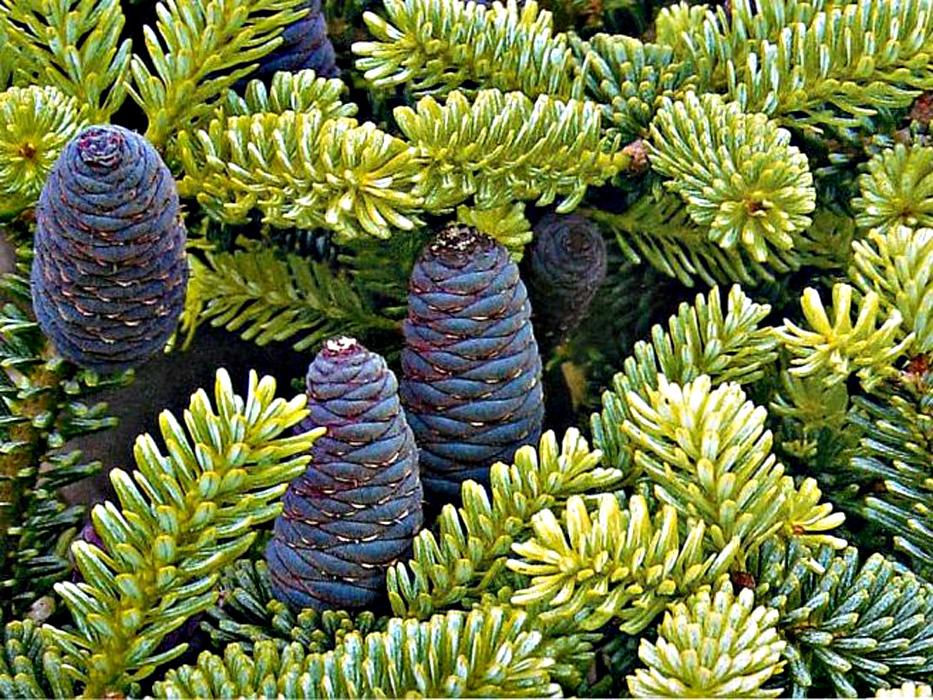
Hemlock - widened in Asia and Pivnichny America.
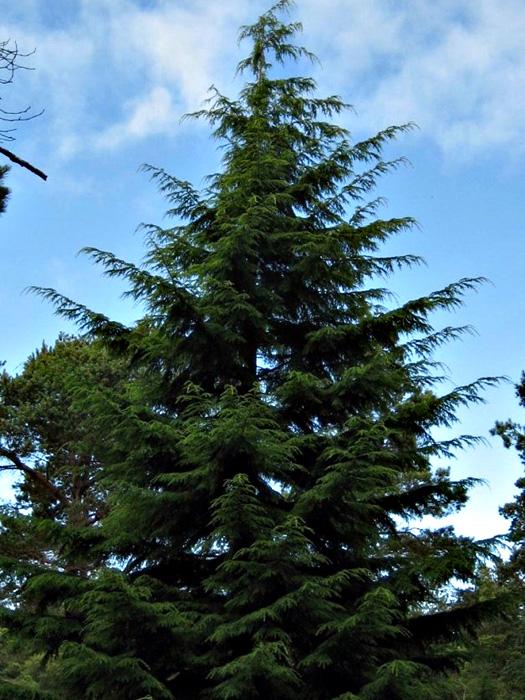
V. Pidokarpov
Pidokarpov - growth on the territory of the pivdennoy pivkul - mainly in the Australasian yogo part. Ale and at the pivnіchnіy pіvkulі the deacons see.
The family includes 20 canopies and up to 200 types of trees.
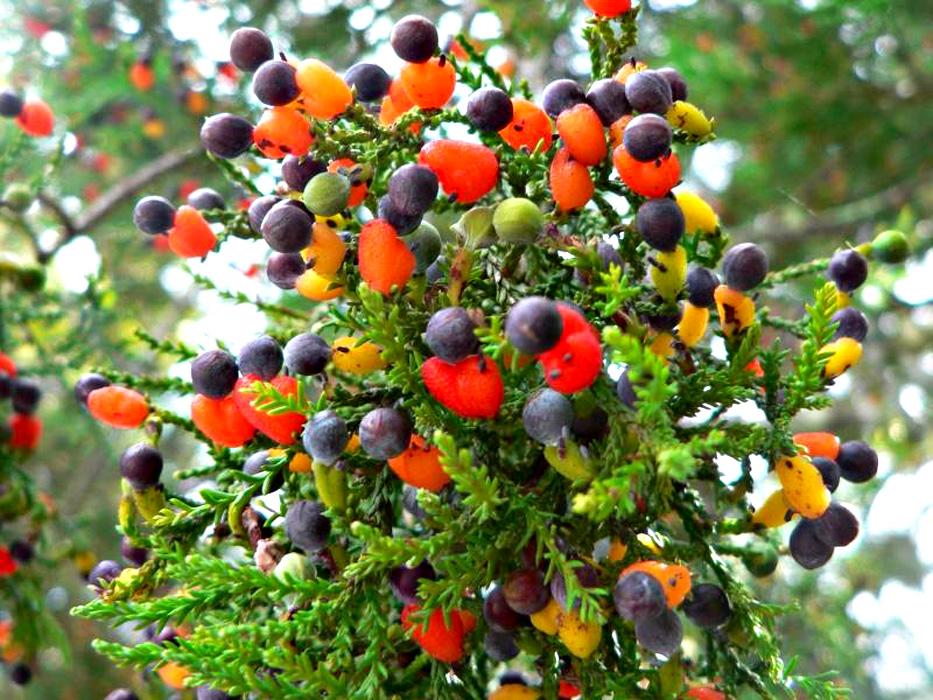
Sciadopіtіsovі - on this day, the whole day grew only in Japan. This tree is from a pyramidal crown. Curls grow up to 40 meters. Maє unique needles.

VII. Tisovі
Yew trees of the genus in the main evergreen, ale, deyak, yak shed leaves. This family includes 6 sheds and 31 species.
Austrotaxus is the only species from the yew family, which grows in pivdenniy pivkuly.
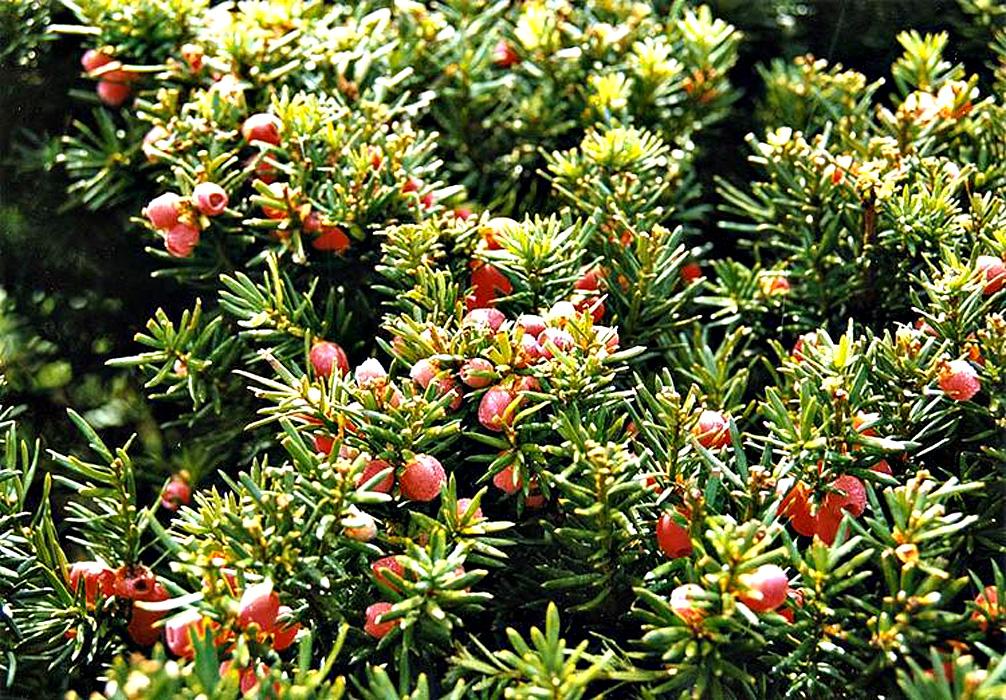
The yew is a tree that grows naturally, or a chagarnik, up to 10 meters high. From the yogo villages they made a cibula ta spisi.
Yew yagidniy
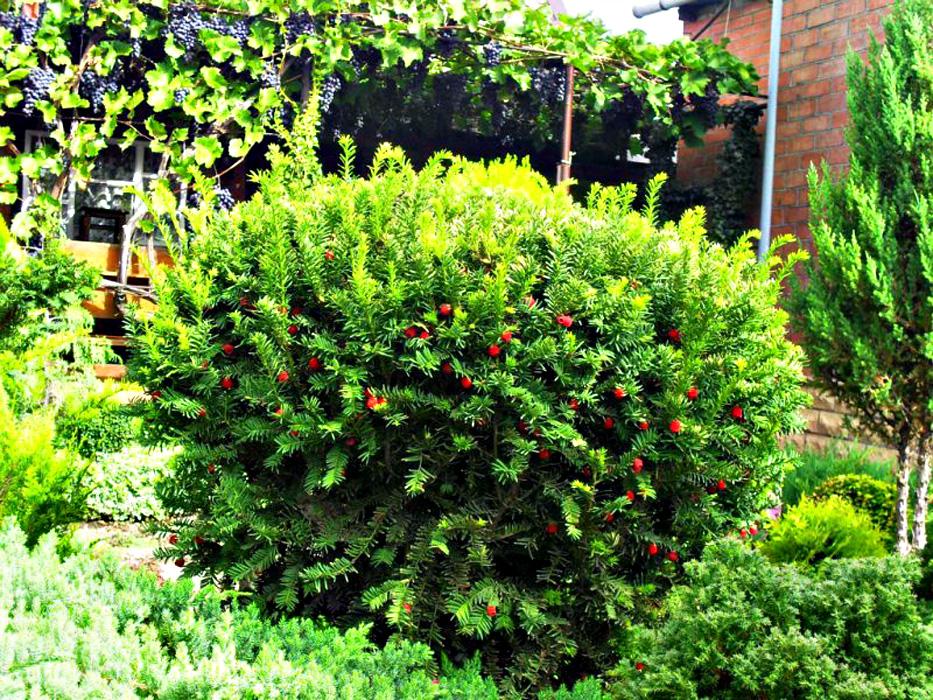
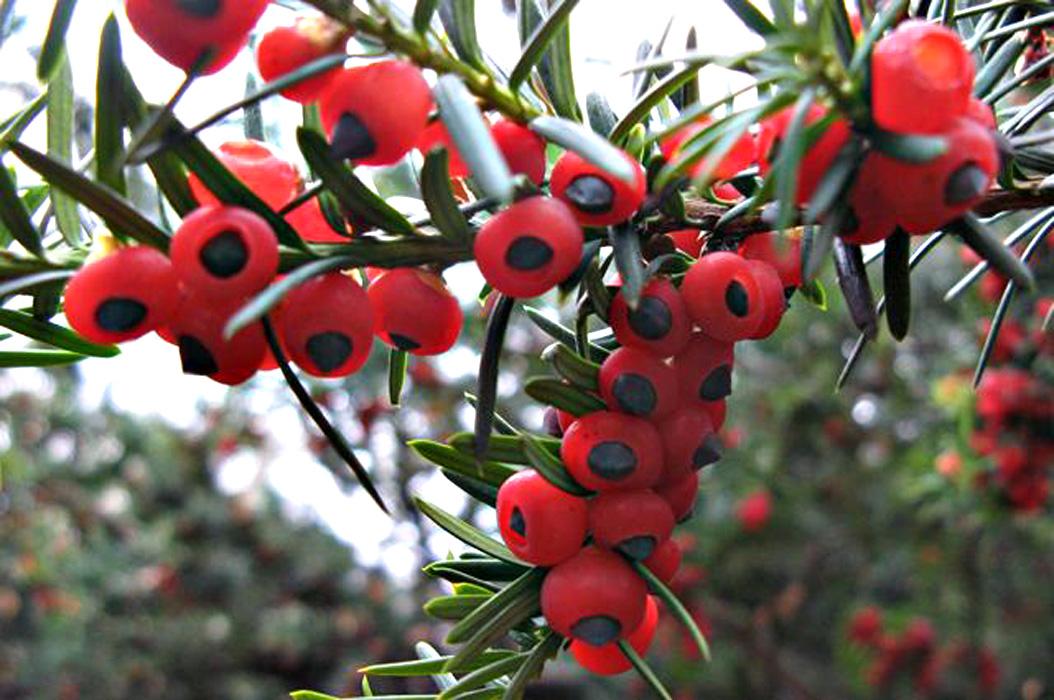
Coniferous roslin is the oldest, most beautiful and decorative class of roslin.
As you have been honored with this material, share it with your friends social measures. Thank you!
HVOINI a group of nasіnєvih sudinnyh roslins. Suchasny representatives of coniferous evergreen, more deciduous trees and chagarniki.For one of the classification systems, this group unites in the class Khvoinya or Pinopsidi ( Pinopsida) in the sight of the Holonasin roslins ( Gymnospermae). This class is subdivided into two subclasses: Wimerlius subclass Kordaiti ( Cordaitidae) and the current subclass of Khvoin ( Pinidae abo Coniferae).
For a different classification system, all modern conifers are put in order Coniferales), which can be included before the class Shishkonosni ( Coniferopsida) looked at the golonasin roslins. One more system to transfer modern Khvoiny to independent land Coniferophyta.
The Russian name “coniferous trees” is similar to the word “needles”, which means the naked leaves of some of their representatives (for example, yalins, yalits, pines). However, not all conifer leafingє "needles". Nastіlki are not exactly called “bump-bearing”, but they are a translation of another Latin name coniferae(Latin conus - cone and ferro - wear), shards and cones are far from all representatives of this group.
Rozpovsyuzhennya. Coniferous trees - grows more importantly warm climate, the basis of which, we will die, we need enough sufficiency. To that, basically, the stench grows near the pomorny climatic zone. Pіvnіchna intera widening the villages of Khvoinykh (as well as in other villages vidіv) zbіgaє z іzotermom linden +10° С. soil seasonal watering, which does not give the opportunity for the roots of trees to take from the soil enough water and living rechovins. However, along the valleys of the river and strumkiv, de through the opaluvalny diyu, the ball of seasonal defrost increases, coniferous foxes stick out on the pivnich deshcho far away. In the subtropical and tropical climates, the growth of the Coniferous forests is important for the lack of atmospheric pollution, so in these climatic zones the stink grows more importantly in the mountains at such heights, in which climate it is similar to the climate of the world climatic zone.Ninі іsnuyuchi Khvoynі - the most numerous and widest group of middle modern golonsіnіh. The most species and canopies of coniferous trees grow near the pivnichny pivkul. Among them, for example, pines, yalinkas, modrins, yalits form here great coniferous foxes, which are formed from one or the other small species. Pivdenniy pіvkulі Khvoinі has the greatest ryasnі in the pomirnyh areas of New Zealand, Australia and Pvdenny America.
Bigness endemic slopes of Khvoinykh (slopes, whose extension is bordered by a small territory) and all old relics Songs (Poloi, Yaki on Daniy Terriety є Research Floer Minijah Epoch, їhnya is inherent in Mozheti Mozdnii in the leaders of Nevomovіdnostі z the shorts of UKOVYY ІСНувная в Ційтиріїнії) Zosecedizes of the Pacific Ocean, especially in the pivy-schіda, Novoї Caledonian, Tasmanian, on the Pacific coast of Pivnichnoy America, near Pivdenny Chile, New Zealand, Southern Australia and New Guinea. This is explained by the fact that the climatic minds in the Pacific Ocean recognized the smallest changes after the Mesozoic - Yeri, in which this group reached its maximum development. Not only a few slopes, but also a few coniferous growths near the Pacific Ocean.
For its meaning, like in nature, so in life the people of Khvoiny sit in another place after flower dews, far surpassing all other groups of greater dews.
History of development. The conifers appeared at the stone-coal period (about 370 million years ago), and at that time the stench grew, as a head rank, at the pivnichniy pivkul. The stench outlived its relatives cordaic and already from the Triassic period (bl. 235–185 million years ago) began to play a significant role in the dewy slope of the beer. In the Jurassic and especially Credian periods of the Mesozoic era (about 185-66 million years ago), the conifers reached the greatest extent and maximum breadth. At this hour, more modern canopies appeared, moreover, at the pivnіchnіy pіvkulі, there were seredzhenі of the Pine family ( Pinaceae), Tissovih ( Taxaceae), Taxodievikh ( Taxodiaceae) and Cypress ( Cupressaceae), and in pivdenny - Araukariavih families ( Araucariaceae) and Pidocarp ( Podocarpaceae).In the third period of the Cenozoic era (about 66-2.5 million years ago), conifers were widened throughout the Earth, the stench was not concentrated on the floor near the Pacific Ocean, like an infection. The stench grew as well as in the polar regions, on the territories that lie beyond the borders between the widening of the woody vegetation (Svalbard, Zahidna Greenland, Antarctica). Tsikavo, that in Antarctica Khvoiny has been growing for a quarter hour (2.5 million years ago and later).
Coniferous trees have recently been found for all of the most important groups of these roslins, including those of Ginkgovih, as a whole, there are surpluses of them in the Permian period (this period began 280 million years ago and three times 45 million years). Ale at that hour, as a class of Ginkgovih, only one species was saved - ginkgo (in fact, the right “copalin is alive”), Conifers, a prosperous group. Among the modern Conifers, the most recent families are the Araukariev, Podokarpov and Sosnov families. There are more and less reliable surpluses of representatives of these three families in the past from the beginning of the end of the Permian period (about 250 million years ago), moreover, Sosnovi, maybe, are three years earlier than the other two. An old age of families, and of old canopies. So, growing surpluses, like a big-small one, are named to the genus Pine ( Pinus), Vіdomi z vіdkladen Jurassic period (їх вік від 185 to 132 million years), and saw grains of the genus Cedar ( Cedrus) - Three years of the end of the Permian period (sixth century, about 250 million years). To be sure, the deacons of the modern canopies of Khvoynykh were grounded before the cranial period, tobto. before the appearance of flower roses.
Rosemary. The modern representatives of the Conifers are evergreen, more deciduous trees and chagars. Rosemary Coniferous varieties - all transitions from dwarf forms to right giants grow.Behind the majestic roses, it’s better to lie down sequoia evergreen (Sequoia sempervirens), which can be attributed to the Taxodiev family. Where is the tree near the world. Yogo average height is over 90 m, and the record is 117 m; the diameter of the stovbur can reach 11 m. Mexican swamp cypress ( Taxodium mucronatum), the thickness of the trunk of which can reach 16 m, and the mammoth tree ( Sequoiadendron giganteum) hire copies of which can be made up to 12 m.
Among the dwarf Coniferous trees, the New Zealand dacridium loose-leaved lies. (Dacrydium laxifolium) from the Podocarp family, the height of which is less than 1 meter. Tse krihіtne coniferous with thin stems, sho spread, making thickets, the head rank, on girsky and subalpine peat bogs in areas with a humid climate.
The hour of life. Deyaki see Khvoinykh - one of the most long-lived growths in the world. So, for example, the mammoth tree is a long-liver, for the last 3000 years it is over 3000 years old, the longest-living record is broken by another look, and the old-time American pine is itself. Pinus longaeva). At Skhidny Nevada, a specimen of the same species was found, in which about 4900 years are dated, which may be five thousand years old. Otzhe, already the hour of the life of the pyramid of Cheops and the growth of the old one was already finished off with the old one (it took over 200 years).Budov. Pagoni. Most of the conifers have two types of pagons: non-circumscribed in the growth of the old pagon (auxiblasts) and fringed in the growth of the shortened pagon (brachyblasts) .Razgaluzhennya pagonіv near Khvoynyh - monopodіalne. With this type of expansion of the smut, the stem (monopod), which develops from now on, may not be surrounded by the upper growth, for which growth grows at height. In the monopodia, the bichni pagons of the first one enter, the other thinly. orders Pagons, which enter the head stem, spread out in a spiral, prote stinks are often so close that they transform into whorls (rings from pagons near the head trunk), moreover, no more than one such ring of tails is usually established. Porahuvavshi whorls, you can mark the age of the tree, adding to the final number 2 rocks, shards of the first 2 rocks of life coniferous trees whorls are not settled. However, this method is valid for apparently young (up to 50 years old) plantations, in which the lower whorls on the stovburs have not yet caught up with the secondary growth of the stovbur.
The needles of such hibny whorls step by step shorten at a straight burn, which gives the tree a characteristic pyramidal shape. At the same time, the bіchnі hіlki of the other and the advancing order roztashovuyutsya bilaterally symmetrically, roaming іnоdі absolutely flat, scho naє tree tiered character. If the upper pagin poshkodzhuetsya, then one of the youngest whorls of beetles can begin to grow uphill and take the role of the head. In old trees, the sound of a wide spread of the crown, which is already formed not from one, but from a few head trees, which is good to remember, for example, in old pines.
In the world of an old tree, in the open space of the yogo, the lower hilts can be saved, reaching mayzhe to the ground (in the crown), but in the thick forest of the stench, ring out to finish the fire through the lack of light. As a result, the lower part of the trunk is bare and almost completely free of knots, which is more important when harvesting wood.
In large coniferous forests, which grow in cold areas, the top of the stream is covered with thin patches, which can sit well, making it clear for the growing season. Nirkovi Luski will be covered zahisniy ball tar or schily cover it with your hairline. In other varieties, for example, in Araucaria, there are no more cypress, nirkovi meadows.
stem. Anatomical Budova stalk Coniferous shdo odnomanіtna. They have a thin bark and a massive wooden cylinder, the middle of which is a core, ice is crushed in older stovburs. Like at the bark, and at the very village itself, there are rich tar passages (canals), like from the lower spaces between the spaces. Resin channels are filled with resin, which are seen by clitins, which whistle.The abundance of conifers near Stovburi is a clear manifestation of the growth of the village, the illumination of some epochs and improvements in the growth of the tree in the wide period of winter cold and summer dryness. The skin of the ring is indicative of the growth of the village during the growing season. Qi kіltsya pomіtnі on transverse sections of stovbur, gіlok and roots. The best stench is in the coniferous and cold latitudes. For a few river rings on the cut of the trunk, carried out at the height of the neck of the root, you can accurately measure the vk of the tree. Come on, those who are low, a sign of future growth, you can sing songs about the climatic mind of the past. Vyvchennya kіlets growth Conifers (as well as in the villages of Kvіtkovyh) vicorist for the dating of archeological remains and natural phenomena (this method is called dendrochronology), as well as the formation of the ancient climate (dendroclimatology).
Korin. The first root of the coniferous trees is saved from all life and develops from a seemingly strained shear root, from which the bich roots emerge. Rіdshe, for example, in some pines, the first root of maladjustments and are replaced by bіchnymi. Krіm dovgih korіnіv (head and bіchnyh), Coniferous є і short, often strongly gillyaste root, like є head absorbing organs of growth. Such a root can avenge mycorrhizae. - symbiosis of fungal mycelium and root growth. Mushrooms-mycorrhizal fungi lay out deaks inaccessible growths organically on the ground, absorb the acquired phosphates, with nitrogen and vibrate speeches of the vitamin type, and the vicarious speeches themselves, like growing from the roots of growths.On the roots of Coniferous, there are root hairs near the narrow zone of the top of the root, which easily fall off when the root is washed.
leafing through in most of the coniferous vuzki and holly parts, such leaves are called needles, prote in more ancient canopies (for example, in some species of Araucaria and Podocarp) leaves are lanceolate and navit broadly lanceolate. So, the pidcarp has the largest ( Podocarpus maximus) The largest leaves reach 35 cm long and 9 cm wide.The green leaves of Coniferous trees are mostly sessile, but sometimes they have a short petiole. May you start the stench of the whole, and less in some kind of yalits the leaves on the tops of the greater or lesser part. Їх dozhina vіd 1–2 to 30–40 cm. swamp pine (Pinus palustris), needles like syagaє 45 cm long. For a vignette of deciduous deciduous or branch-falling canopies (araucaria, agatis, taxodium, metasequoia and cunningamia), leaves of coniferous evergreens, arborvitae, greater-less zhorstka and shkiryasti. Leaf growth, as a rule, spiral or chergove, more - whorled or opposite. Vuzke leaves (needles) have one vein, wider - richly parallel veins. The leaves are flat, chotirigranne or rounded.
Cream of green photosynthetic leaves, some Conifers have brown, luscious leaves.
Reproduction. Organs of reproduction in Conifers are strobili. - modifications of shortened pagons, which bear special leaves - sporophiles , on which spore-forming organs are formed - sporangia . These are human strobes (they are called microstrobes) and women strobes (megastrobes). Megastrobes, as a rule, grow in compact collections, but rarely grow alone. Choose megastrobiles and single megastrobiles are called female cones .Microstrobilus in most conifers grows singly, and, even rarely, in some primitive forms of conifers, in compact collections. Collect microstrobes and single microstrobes are called human bumps.
Sound Coniferous - monoecious growths (human and female cones develop on one tree), more stench of a two-house (female and human cones develop on different trees).
Human cones are most often selected in groups and ring out in the axils of the leaves, more often on the tops of the beech pagons. In the basis of the cones, there are often small pieces, which will win the role. Microsporophiles are narrowly reduced, lusco-like or shield-like. On dermal microsporophilia, it is approved in 2 to 15 microsporangia. In microsporangia, tissue sporogen is established, sharpened from the sides with a tapetum ball clitin, yakі deliver living material for microspores that develop. The number of microsporangia that settle into microspores is already great, the stench is even lighter, which helps to widen them in the wind.
Human gametophyte develops from skin microspores. - the state of the generation of roslin, the life cycle of those to pass from the drawing of the state and the stateless generation. Mayzhe in all higher growing plants (for a wine moss) the gametophyte is weakly developed and not long-lived .
The majority of coniferous developments of the human gametophyte begins even before the emergence of microspores, that is. more, if the stench is in the middle of microsporangia. In other conifers (mostly yew and cypress) the development of human gametophyte starts only after microspores will be transferred by the wind to seedlings, which are found in female cones.
The skin bump, as a rule, is formed from the central axis, on which the luska sits, which cry, in the dermal sinuses there is a luska, which is a modification in the process of evolution of megastrobiles. In different lines of evolution of Coniferous trees, there is a process of incremental growth of a crooked and nascent luska (that is, a lusco-like megastrobile), which, by the way, leads to the adoption of a simple, evil luska, often called a fertile complex.
On the upper side of these lust-like megastrobils there are simi . The last germ is a megasporangium (here it is called a nucellus), an exudate with a special zahisnoy speech - an integument. The skin nucellus develops 3-4 potential megaspores, of which more than one is capable of development. In the middle of megasporangia as a result of a bagatorase subcase of megaspores, which function, a female gametophyte develops , titles endosperm .
For help helping the bears of saw blades human bumps be transferred to sim'languages. There is sawing and the stripes of the woman's cones are stooling. The human gametophyte continues its development on megasporangia. After a singing interval, an hour after the sawing, the process of flooding begins, which sounds like a stretch of that very season. An extraordinarily great time at the sight of a pine tree, which has been sawn and flooded for 12 to 14 months. Once the zygote is established (the clitina, which is established as a result of the anger of the human and the female clitin), for some reason the germinal germ (pre-germ) begins to develop on the cob, and then the right germ. The development of the embryo is seen as the endosperm of the reserve speech.
The embryo, which has been formed, is formed from the root, stems, dekilkoh sim'yadolіv (germ leaf) and nirk. The germ of the endosperm, which vikoristovuєtsya under the hour of germination. Integument establishes a firm skin of ours. The new rudiment grows strongly to the new weave, from the fabric of which a wing-like spit is established, which spreads the width of the wind. In this rank, matured now to avenge the germ of the sporophyte. , with spare speeches and stealing with a silk. Sporophyte is a stateless generation of roslins, the life cycle of those who go through the cycles of a stately and stateless generation. all Vishchi Roslini(with a hint of moss-like) represented by sporophytes.
Nasіnnya Conifers are much more varied for size, shape, and zabarvlennyam. The fur coat can be woody, woolly or retinct. Nasіnnya, pritosovane for expansion in the wind, provided with one great wing-like appendage or 2-3 small wings. Now, which is rozpovsyuzhuetsya creatures, often maє sovity and brightly twisted.
Mіzh zapilennyam that dozrіvannyami nasіnnya pass dosit rich hour. For example, in the pine splendid ( Pinus sylvestris) the maturation of the present day is coming in the autumn, another fate after the sawing. Up to this hour the cones reach 4-6 cm, their patches of wood grow and become silent from the green ones. In the coming winter, the cones wilt, the little tufts diverge and now hang. Seen in the mother's growth, for the present, maybe a trivaly hour, resting at the station of calm and destroying the minds of the minds less.
Characteristics of families. There are 7 families among them, nearly 55 species and at least 560 coniferous species.Araukariavih family (Araucariaceae) already a long time group of Khvoinikhs, their geological history of the house, starting from the end of the Permian period, although, perhaps, the stench may be even more old. Tse high trees that grow in tropical and subtropical zones of the pivdenny pivkul. Leaves sound large, broadly lanceolate or ovoid, and sometimes rounded; Rіdshe stink drіbnі, holchasti. Some species have green leaves growing not only on pagons, but also on stovbur. Branches fall to the peculiarities of Araucarievihs - the authorities are more likely to throw off leafy bichnі pagons or to bring flogs from the leaves.
Rosliny is mostly two-house. Microstrobes are large, carry a number of spirally spread microsporophiles. Zhіnocha cone is made up of a large number of patches, which is the result of repeated or mayzhe of repeated growth of nasіnєvih and kryuchi patches.
The family includes 2 genera: araucaria ( Araucaria) ta agatis ( Agatis).
There are 15 species of araucaria that grow in New America (Chile, Patagonia, Tierra del Fuego) and Australia. See araucars often make great foxes.
Nearly 20 species are available, wider in New Zealand, Western Australia and Oceania. Deyakі see є fox-creating breeds.
Araukaria may have important practical meaning. The greater number of species gives the value of the tree, which is now natural (the food product of the population of Chile). From the sight of agatisa they see the resin. In their natural range, they are often bred as decorative breeds.
Family of Pidocarps and Nogoplidnikovs (Podocarpaceae)
The history of the development of the family begins with the end of the Permian period. The warehouse of the family has 130 species, which are wider in the post-tropical areas of pivdennoi pivkuli, de є head fox-creating species. In the tropical zone, they grow near the mountains of India and Skhidnoy Asia.
Tse potuzhnі upright trees or chagarniki, scho creep. The leaves are often small, broadly lanceolate, lanceolate, golkopodіbnі or luskopodіbnі, іnоdі large and wide, with some veins.
Roslini ring out two houses. Microstrobes of dribni, folded in a spiral order of numbers of small microsporophylls, which carry 2 microsporangia each. Typical female bumps do not sound. Megastrobile is more than reductions, it is composed of one sіm'tongue, honed with a strongly altered luska, as if it's a double coat of the sim'tongue, or it's reduced to a small vaginal appendage of the base, sometimes nasіnєva luska vіdsugalі vіdsugalі
Podokarpov's tree is especially strong and widely vicorous for various varieties.
Tisov family (Taxaceae). Behind the grapevine are two species of Tissovy widened in the pivnіchnіy pіvkulі, where the family has a great, aloe expansion area. The stench is booming in Pivnichniy America, and in Europe, and Asia. The geological history of the family originates from the Jurassic period.
Yew - evergreen tree chagarnika. The tree has more and less pronounced growth rates. Leaves are lanceolate or linear, sometimes on short (1-2 mm) petioles.
Tisovі two-house, rarely one-house. Microstrobes in most yew trees are singly, aloe are also serezkopodіbnі, kolosopodіbnі or kulyastі zbori, roztashovanі in the axils of the leaves. Microsporophiles can be different, mostly shield-like stench, skins from them carry 2 to 9 microsporangia. Megastrobiles are united in a collection, which looks like friable cones with oppositely mixed pairs of megastrobiles. However, ring out the number of strongly reduced links to single megastrobiles. The stench is made up of one sіm'yazachatku, honed white of the base with a comorce-like cover (її called arіlus) red, yellow or white color. Morphologically, aryllus is similar to nasіnєviy lusci. The cover is covered with a cover of the ripeness of the day, with the year it becomes juicy and brightly zabarvlenoy, which is attached to the expansion of the bird.
In the midst of the yew trees, the right old-timers are ringing. So, the trivality of life is a yew yagid, or splendid ( taxus baccata) up to 1500 years, inkoli, perhaps, and up to 3–4 thousand years.
The family has 5 beds. Tse tiss ( Taxus), torreya ( Torrea), falsethis, or pseudotaxus ( Pseudotaxus), Austrotaxus ( Austrotaxus) ta amentothaxus (Amentotaxus).
Family (Cephalotaxaceae). The family is represented by one genus - capitates ( Cephalotaxus), which is composed of a total of 6 species. In the ancient geological hours of the capitate boules are widely widened in the pivnichniy pivkul, but at the same time only in Asia, the stench grows, as a head rank, in the wild mountain forests at a height of 300-3300 m above the sea level.
Evergreen, two-house, rarely monoecious trees of small height (10-15 m) or chagars. Leaves shkiryaste, vuzkolin_yne.
The peculiarity of the family is the presence of the backbones of microstrobes. Tsі kіlyasti cholovіchі cones roztashovanі on short legs on pagons of the rest of the rock. Megastrobili are collected in small bumps, in skin buds they develop as one to three cystic-like bumps.
In Japan, one of the species of the family uses wax-like speech, which is used for technical purposes (for example, for making candles), and vicorist oil is used for making farb and varnishes. Some of them are capitate and vicorous in decorative purposes.
Family of Taxodievikh (Taxodiaceae). Such taxodies are just “living copalins”, remnants of a prosperous family that vindicated over 140 million years ago (the most recent remnants of taxodies are dated to the end of the Jurassic period). The stench reached its greatest extent in the tertiary period, since the number of representatives was widened throughout the entire pivnichny pivkul. Taxodieve boules important components lіsіv, which stretched out on the majestic territories of Pivnіchnії America and Eurasia and reach Svalbard and Greenland, now they have lost only small islands near Pivnіchnіy America and Сhіdnіy Asia.
At the same time, the homeland is represented by 10 genera and 14 species. Zavdyaki decorative look And with a beautiful stone tree, most of the slopes of this family are cultivated in the rich corners of the earth's backwoods.
Modern taxodies - mostly large, often Veletensky trees with the same pagons, which are divided by dozhina. The leaves are linear-lanceolate, holly or luscious, spirally ruffled. You see leaf fall, and in those canopies, where there are two types of pagons (lower and shortened), there is a manifestation of twig fall - in the autumn, shortened pagons fall off from the leaves at once.
Microstrobes singly, less than one kind of stench were selected in the primitive head part of the selection. Female cones are dry, solitary, upper, from flat or shield-like patches.
A number of the best roslins. The first of them to call varto - sequoiadendron chi mammoth tree (Sequoiadendron giganteum) and evergreen sequoia (Sequoia sempervirens) are one of the largest and longest-lived trees in the world.
Cypress family (Cupressaceae). The family includes 19 gently sloping and close to 130 species, widely widened like in pivdenniy, so in pivnichny pivkul. Out of 19 lows, only three include rich species (from 15 to 55) - ce cypress, kalitris and yalivets.
Cypress - evergreen trees and chagars. The trees are mostly medium-sized and low-growing, although the trees can be even taller, up to 70 m with a cusp, with a stovbur, which sometimes reach 6 m in diameter. In the midst of the chagarnikovy cypress trees, there are streaked and forms that creep. Leaves are fuzzy, luskopodіbne or golkopodіbne. Microstrobes sound alone. Women's cones are made up of a bunch of woody, succulent and succulent patches.
Pine family (Pinaceae). It is important to name such a family to navit the middle of the flower roslins, as, according to the territory developed by it and according to the biomass that is accumulating, it could be affected by pine trees. For the grape of one species, the whole family is wider in the pivnіchnіy pіvkulі, mainly in the dead and subtropical zones (in the rest, it is more important near the mountains). Deyaki see pines, yalins, yalits and modrins climb high into the mountains and go beyond the polar ring.
This family is widely available 10 hours 11 years and close to 250 species. They see the 4 largest genus - yalitsa ( Abies), modrina ( Larix), yalina ( Picea) that pine ( Pinus), leathers from some of them are available for dozens of sprats, and even a hundred (pine) species. Other canopies (cedar, hemlock, pseudo-hemlock, keteleiriya, kataya, false leaves) to revenge one by one or a sprat of sight.
Pine - evergreen or, nearer, deciduous trees, chagars, which can be spread. Golkopodіbne, luskopodіbne, more vuzkolantsetovy leaves can be different rosemіrіv vіd crikhіtnykh to strongly vityagnutyh, which reach 45 cm at the dovzhin (bog pine - P. palustris). Trimatis leaves on trees from 2 to 7 rokiv and less in modrina and pseudo-leaves fall off for the winter.
In some canopies (for example, in pine, modrin, cedar) there are two types of pagons - dovgi (non-furnished in growth) and short. Dovgі pagoni vkritі numerical, shvidko withering luskopodіbnim leaves. Modrini, cedar and false leaves carry stench and green leaves. Short pagons stink in the axils of the luscious leaves on the lower pagons, often the stench falls at once from the leaves that grow on them.
The pine trees, which grow in the minds of the Pivnoch, have nirks protected by thin strips, which lie snugly one to one, covered with a tar-filled ball.
Microstrobes singly, more like grouped to groups, are composed of numerous microsporophiles. Megastrobes are selected from the folds of light - cones, the shape and size of those for the dermal genus are rіzna. Rosemary cones - 2.5–3 cm at the dozhin at the modrini Lyell ( Larix lyallii) up to 50 cm in the American Lambert pine ( Pinus lambertiana).
The greater number of pine trees is straining root system, which is often sung mycorrhiza(Symbiosis of mycelium of the fungus and the root of the growth). Mushrooms, yakі enter into symbiosis z fox trees, Most often put up to a group of drop mushrooms. Mushrooms, like picking from the fox, nothing else, like the fruit of the body of mushrooms, tied to the roots of different trees.
Pine-shaped villages can be seen up to great trees, which reach 40-50 m in height and 0.5-1.2 m in diameter. However, in minds that are unfriendly to themselves (far away in Pivnoch, high in the mountains, in swamps), the stench can turn into short dwarfs, but in such places one can smell the oldest long-lived inhabitants of the Earth. So, the most long-lived roslin on the Earth (and itself, already a copy of the old pine tree, for about 4900 years) rose on the mountain peak and perebuvav at the lowered station.
Pine wood is different for its texture physical authorities. For a long time they have been victorious in Eurasia, Pivnichniy America and often in Africa, which has always been the main material from which dwellings, gospodarskie budіvlі, cult and hromadski budinki were built.
None of the meanings of the countryside are even more mature. As early as її vykorovuyut at the carpentry and budіvelnіy sprava, the prote of the greatest value won at the cellulose-paper industry. For vykoristannya tsієї villages in the rich countries of the world are pieced apart see different which family.
Nataliya Novosyolova
LITERATURE Khrzhanivsky V.G. Fundamentals of Botany with Practicum. Great school. M., 1969Life of Roslin in six volumes. Volume 4: Mosses, club mosses, horsetails, ferns, golonasinn trees. Enlightenment. M., 1978
Global botany with the basics of geobotany. – A handyman for students of vishi. V.V. Petrov, L.I. Abramova, S.A. Balandin, N.A. Berezina. M., Vishch.shk., 1994
Bdzholin V.I. Vyznachnik coniferous villages roslyn. Proc. posibnik 2nd species., revised. that dod. Yoshkar-ola, 1995
Alexandrova M.S. Coniferous trees in your garden. Fiton+, 2000
Conifers, or cones-bearing ones, are the widest and most important group of middle-aged barren, representatives of which are kindly known to the baggers of calm and cold latitudes.
Conifers - evergreen trees and chagars. This name of the stench was taken away through the leafy part, as if they were called needles. The needles are doubled (pine) and short (yelina), placed on surges, but alone or picked in bunches. And they are called cone-bearing ones through cones, in which conifers have seeds. The cones are more varied for their shape and dimensions.
The coniferous trees multiply in us, which are settled in cones. Coniferous trees ring out single-house growths. The stench of the wind-drinking of the roslins, to grow in great groups, which will give the best sawed-down that settled greater number of us. natural vegetative reproduction in coniferous trees, but a person learned to propagate them vegetatively rooting livestock for additional speech, to root (for example, cypress).
Conifers are wider in warm, calm and cold areas of the earth's backwoods, and more - near Pivnichniy pivkul. The most wide-spread are the pines and the spruces (іl. 39.2). Widely known: modrina, yalitsa, cedar, cypress, thuja, yew and in.
What features of life and life are characteristic of conifers?
Conifers reach 100-120 m-code height and up to 10-16 m-code in diameter, can live 2000-3000 years and more. However, the old century (up to 5000) may be a long-lived pine, like growth in the high forests of California. Coniferous power upper_vkovy growth, tobto. the stench grows at a height less than tops. Gilks of tsikh roslin are roztashovuyutsya kіltsami. A lot of one ring is settled. For the number of tsikh kіlets you can pіdrakhuvat vіk roslini. Coniferous trees have two types of pagons. So, white yalini, yalits, yew pagons are no more uplifted. In pine, modrini, cedar, it’s like a podovzhenі, so it’s a short pagon; leafing at the same time, they spread on shortened surges. Stovbur representations are mainly made of wood, in which resin walks are often found - fabrics are specialized, OK you can see the illumination of the resin walks of the clitin, which are filled with resins, balms, firn oils.
Leafing in large hollows - bugatory, shkiryast, linear, may look like a little meadow or a bark. Most of the leaves are called needles (stars and one of the names of these roslins). On the transverse cut, the needles are flat, two triangular. Above the sheet is covered with a twisted cloth. Under it there is a ball of clitins from sweating walls, which protects the inner clitins from hanging. Let the photosynthetic wire tissue grow. Go near the leaf and the resin (іl. 39.4).
Residually installed, like the same roslin like golonasіnі. However, most of them shirk to the idea that they stink like dead ferns. The first golonasinn calls were even more similar to ferns, through which they are called the most famous ferns. The same tsі roslini and gave the cob to usim groups of modern holonasin. Some of them are represented by an insignificant number or by one species (ginkgov), and others by numbers (conifers). Nasіnєvі ferns gave the cob and pokritonasinnim.
How do you grow conifers?
The organ of reproduction that is adopted in conifers is a cone. Basically, the cone is made up of two types of luska: curly and flat. The color of light is, obviously, modified by leaves, like a tree or wood, or become m'yasist or shkiryastym. Pilni bears (sporangia) in coniferous sprouts in strobila, and seedlings in cones (stars of another name are called golonas). Pilok in coniferous trees often can be checked by the chamber, which sprays the rose of yoga with the wind. Nowadays, we often have krylopodіbnі programs. Tse pristosuvannya for yoga widening. The cones are hung up on the tops of the mountainous pagons, and the pile bears are crowded on the foundations of the river pagons. The stench mayut yellow color. After the ripening, the rose of the nail file falls off. Sound the cones of firmness (pine), shkiryasti (yelina), more luscaty (thuja), sometimes succulent (yew, yalivets) and even they are called cone berries. The cones of the first fate of life, before sawing down the new beginnings, may have a reddish color and softness on the dotik. After that, as if for help the wind of the files is used on the bump, the little pieces of the bump curl up. A cone of a tree, becomes green and dies to the axis of the leak. For the first hour (sound until the fire) the grain is at the top of the new germ, and then it germinates. Pilk's tube, as when it is settled, growth is more appropriate and consumed in the egg only after 12-15 months from the moment of sawing, if it is flooded. Nadal, from the zygotes, the germ of the nasinnya is established, from the curvature of the symphysis of the tongue - on the skin, and the stock of the living tongues is accumulated in the endosperm cells. This is how the soul is formed. The last one ripens like another summer after sawing. The world's ripening bump is growing. If we are now ripe, out of the green become brown. At the ripe brown cones, a vzimku or on the cob of spring, the lusca of the sun, which grows, hangs. Zavdyaki krylopodіbnі virosity will be kindly rozpovsyudzhuєtsya in the wind. Visipannya nasinnya vіdbuvaєtsya on the third river after sawing. Henceforth, the conifers multiply in our days, as if they are established from the present rudiments after the flood (il. 39.5).
What are the features of the widening of conifers?
The conifers are widened on both pіvkulakh of the Earth. The stinks of foxes in the great territories of Pivnichnoy Eurasia and Pivnichnoy America. The coniferous foxes of the dead latitudes Pivnichnoi pivkul are called taiga. The taiga of Pivnіchnoi Evrazії and Pіvnіchnoi America v_drіznyaєtsya behind a warehouse of coniferous trees. Among the forests of Eurasia, yalinkas, yalits, and modrini prevail. And in the forests of Pivnichnaya America - hemlocks, pines, yalits. At Pivdenniy pivkulі conifers in the pomirnyh areas of New Zealand, Australia and Pvdenny America. There are wider araucars, podkarpusi and agagisi, as we can only drink in greenhouses. There is no coniferous tree in the Arctic and Antarctica. Nearly 90% of the forests of the earth's bushes are formed either by conifers or by conifers leafy trees. Largest number seeing pines, yalits, yalins and modrini are guarded near the Pacific Ocean, especially in China. It is explained that the climate near the Pacific Ocean changes less during quiet hours, if the conifers prospered, then this territory can be called the "colossus" of conifers.
KLAS HVIYNI, ABO PINOPSIDI (PINOPSIDA, ABO CONIFEROPSIDA)
For this class is characterized by frizzy leaves and clear streaks. The class is subdivided into 2 subclasses.
PIDKLAS KORDAITOVI (CORDAITIDAE)
This subclass includes one order Cordaitales with one family Cordaitaceae mostly vimerlich roslins. The cords come from the Middle Carboniferous, the wide width of the naboules in the end of the Carboniferous - Permian. At the same time, with the smaller hollow-growing roslins, the foxes made up the stench in the great territories of Pivnichnaya and Pivdenny pivkul and took their part at the molding of the stone vugill. I'll give you the best possible safety 2 give birth - cordaite (Cordaites) that cordaitanthus (Cordaitanthus). Kordaїti boules are represented more importantly by great trees (wreaths up to 20-30 m with a diameter of up to 1 m) with a highly ruffled crown (Fig. 77). Found and low-growing trees with repeated roots. Spirally roztashovane shkiryaste leaves were more different for the form; descriptions are linear, lanceolate, elliptic, rhomboid-shaped with a diameter of 3-4 cm to 1 m. The points of the tracheids are slightly oblyamovanі pores, mainly on the radial walls, which are close to araucaria.
Kordayiti buli were two-house roslins; like on men, so on women's dews near the axils of the leaves, or between them, earring-like constrobiles rose up. Micro megastrobili were found on the lower axis. The skin microstrobile mav was short-lived, at the base of which sterile strips were stitched, and at the upper part there were flat microspores.
filaments with a bunch of undersized microsporangia at the top. Skin microsporophils included 1 vein. The vona was split dichotomously at the upper part into 2 bundles, which were included in the sporangia. Microspores were small one hitting the bear, which may have suffocated the super-cat. Megastrobili in the base also carried sterile luska, and in the upper part - simple or dilated sporangiophori - simian legs. The last rudiments of the small file chamber, you can let it go, that the filling was for additional spermatozoa. The present rudiments were suddenly single-integumentary, the shards, in order of vascularization integument, were indicative of vascularization of the nucellus. Also, the entire nucellus was the result of a close growth of the nucellus in the water with an internal integument.
Sporidnenі zvyazki kordaїtіv not fully understood. A lot of paleobotanists look at cordaitis as an ancestral group of conifers.
PIDKLAS KhVIYNI (PINIDAE)
This subclass is the largest in number of the most common hollow-blue growths (including 7 families, 55 flats and about 600 species), the largest extensions are practically in all earthly backwoods, the Crimea of the Arctic and Antarctica. At history Coniferous lands appeared in the other half of the Paleozoic -
representatives of the family are described in the Upper Carboniferous lebachievikh (Lebachiaceae). The stench originated at Pivnichniy pivkul, perhaps, in the minds of the peaceful climate; є pripuschennya, scho local mainland zledenіnnya called for an increase in the dryness of the climate. Therefore, the first conifers were small rice of xeromorphic structure and were characterized by the presence of river clusters near the tree. On the inter-Perm and Triassic, the continental climate improved, so in the Pivnichniy pivkul, the number of conifers grew sharply. There are the most recent living ones - araucaria, podcarps and pines. Prote a clear delimitation of the family of more buv; so, you see the araucaria, described from yuri, the signs of pine, cypress and araucaria have appeared in themselves. In the end of the Permian, conifers began to penetrate into Pivdennu pivkul, and since the Triassic, they have been widely expanded along the earth's backwoods. Coniferous rosewood reached the Jurassic and Creedian periods; until what hour is the appearance of all the other living families. On the cob of the Cenozoic eri, the water-cremation of climatic zones and the formation of areas of roslin begin. In the first half of the tertiary period, in the Eocene, the climate was more warm and the waters and conifers were widened in the Arctic (the stench is marked in Svalbard, Greenland, Scotland) to Antarctica. In the advancing period - in the Oligocene, the area of coniferous beginnings shriveled, but on the territory of Europe, Pivnichnaya America, Northern Asia, pine foxes grew with a great deal of thuja, palms, chestnuts, magnolias and other heat-loving species. Before the Oligocene deposits one can see the famous burshtina; storm vugіllya Nіmechchini is covered with swamp cypress. At that time, at the same time, from the sequoia, reaching Svalbard, and in Denmark, the growth was mainly in the mouth of the Mississippi river. Conifers in the Oligocene shriveled up near Antarctica. A turning point in the history of conifers, a quarter period emerged from a series of icings. In Europe and Asia, during the present ice age, all thermophilic species see coniferous vimerli. Less than young people were spared, they were cold-hardy, as if in the wake of the ice-maker they widened widely in the boundaries of calm and cold regions. Pivdenno-Skhidna Asia folded the vines; At Pivnіchnіy Ameritsі, the fire was spread mainly in the meridional straight line, so the heat-loving ones saw the ice migrating on the pіvday. After the ice trap, the deacons often turned their positions from them, wanting the role of ninth in Pivnichny America to lie with young cold-resistant species. Near Pivdenniy Pivkul, a lot of ancient species of conifers were preserved, and ale stink is more widespread, more importantly in areas with a milder climate. In the tropics, coniferous trees grow like a head rank in the mountains, tobto. so in the minds of a peaceful climate, if you want to see the pines and the subcorpus grow in subtropical forests.
Modern conifers are represented mainly by trees, more often by chagars, or by a special elfin - a form that can spread. However, the middle of the ancient coniferous vimerlihs streaked into grassy growths. Pagons in conifers are either lowered, or two types - lowered and shortened. Regardless of the name, leafing through the conifers, do not take the shape of the needles. Coniferous trees grow with an ovoid, lanceolate form of a leaf, and more often the stench may have a hollow-like or a luscious form. Judging by the meager paleobotanical data of the Permian lebakhievs, it is possible to grow visnovoks, which stench may be like synteloma, shards of leaves dichotomously rosy or bulo on the top of the split. Vіdpovіdno up to tsgogo dichotomy razgaluzhulyalis і їх
veins. The number of conifers is important - evergreen growth; The trivality of the life of a leaf is recognized as the biological features of the times and the ecological minds of their life. The light-loving pores have leaves zhshgg! in 2 to 5 years, in tinnitrivals up to 10-15 years, and in high spirits - up to 25-30 years. Mustache of evergreen breeds may be zhorstke, strongly cutinized and sclerophicized leaves; their scum is rotting on the lower side in the pits, which means that the evaporation of water is fast in the winter period. In deciduous porid - in modrini (Larix) that false leaf (Pseudolarix) the needles are lower, soft, like those of a magnificent leaf, for which the stench took away its name. For some conifers, for example for taxonomic (Taxodium) metasequoia (Metasequoia) pine (Pinus), characteristic branch fall. 1 when falling off, not with a leaf, but with a shortened twig, j
The root system, as a rule, is strizhneva, but in some species, for example, in yalina, the head root is to be harvested quickly and the surface root system is formed. In other ways, like, for example, in a pine tree, the root system appears to be labile and its character is characterized by the level of ground water. More coniferous characteristic types of mycorrhizae. The vegetative reproduction of the greater number of conifers is not powerful; When fertilized with auxins, coniferous trees grow vegetatively propagated (this is how blakitny yalins are propagated).
Anatomy of coniferous stems is characterized by a weak development of the parenchyma of the core and an intense development of the tree. The pores in different species can grow both on the radial and on the tangential walls. Vіdmіnnoy ryosu in budovі pіr є nayavnіst torus, scho priyає active migration of water from one tracheid in Іншу. In a tree or bark of rich conifers, resin canals or resin cells, in some species, resin begins to be seen only as a reaction to injury. Leaves on the surface are covered with a thick-walled epidermis with a tight cuticle; scumbags are deeply bored. Under the epidermis, the hypodermis is rotting, behind it is a ball of folded mesophilus with resin ducts, and in the center is a bundle with cambium. On the yogo periphery there is a transfusion tissue, like a link between the bundle and the mesophilus. In this order, in all evergreens conifer needles may have a xeromorphic structure.
Sporulation in conifers is present in different varieties; in light-loving species - on the 15th-20th life cycle, and in the majority of growing tenovitrivalih - on the 40th-60th-80th life cycle. Human cones, which are microstrobes, are supra-linguistically different in terms of the nature of the growth, size and shape, like the cones themselves, and microsporophiles (Fig. 78). . In naybіlsh "davnіh pologіv (araukarії, agatіsa, sekvoї) cholovіchі bumps roztashovuyutsya singly on the tops pagonіv abo in the leaf axils Їh rozmіri dosyagayut 10-25 cm i mіstyat sotnі mіkrosporofіlіv However bіlshostі cholovіchі coniferous cones drіbnіshі -. Vimіryuyutsya dekіlkoma deyakih navіt mіlіmetrami. and Quantity mіkrosporofіlіv vimіryuєtsya kіlkoma dozens Yak usually bumps zaymayut axillary position, where often stink utvoryuyut puhkі abo schіlnі skupchennya - konstrobіli -. Pershe, priskorennya termіnіv utvorennya sawing zbіlshuє ymovіrnіst eclipsing, in other words, avtonomnіst kozhnoї cholovіchoї bumps pіdvischuє nadіynіst їh zagalnoї BEZPEKA . one of them authors viznaєtsya pervinnіst radіalnoї structure іnshimi - dorziventralnoy, ale nayіmovіrnіshe, Ti th INSHI structuring vinikali Square od each other, scho pіdtverdzhuєtsya paleontologіchnimi danimi away їh evolyutsіya yshla parallel Shlyakhov Quantity mіkrosporangіїv, їh rozmіri i character prikrіplennya TER duzhe rіznomanіtnі... More of ancient species, the number of microsporangia can reach 10-20 and the stench is freely known from the lower side of sporophils. In more diverse species, the number of them shortens to 3-2; moreover, sometimes (like, for example, in a pine) the stench pierces the fabric of sporophilia and grows from it; it reaches the cutting edge of the file that is being formed. The female cones of conifers are constrobiles. On їх osі luski roztashovuyutsya, scho kryut, in the sinuses of which are formed on інєві luski. On the upper (internal) side, there are talons. The food about the journey of our country is discussed by many people for dozens of years, moreover, it was interpreted differently by different people. From the study of paleobotanical material, data on anatomy and chronological morphology, most of the current findings are taken into account that the spore-bearing leak is strongly modified, that is. megastrobil (Fig. 79). On the melancholy of this one, arguments are low. In the first place, the last luska is ripped in the axil of the luska, which is crooked, and according to the laws of morphology in the axil of the leaf, it can only be blamed. In another way, often in modern times, in certain other times, there are signs of germination of a woman's cones in a leaky one. When you cry, the luski swell green colors and the shape of the needles, and shortened vegetative pagons develop in their axils.
Thirdly, among the most recent representatives of the Lebakhiev family, described from the Upper Carboniferous - Permian, reproductive organs have been found. On their axes, near the axils of the crooked patches, not single patches were stitched, but short pagons. The skin of the taka in the main carried a sprat of sterile strips, and in the upper part there were 3 to 1 seed on the long legs - the legs. However, in the Upper Permian Voltsієvih in the sinuses of the luska, which cry, roztashovuvavsya the entire axillary complex of the intermediary life between the flow and the nasіnєvoy lusk. In most modern coniferous female cones, the cones are formed from a large number of crooked and nascent patches. spivvіdnoshennі rozmіrіv kryuchoї and nasіnєvoї luski, in their consistency, form. The dermal family is characterized by its own peculiarities of crooked and nascent patches.
Human gametophyte - a powder begins to form in the middle of the microsporangium; vins are composed of 1-3 shvidko visceral prothalial clitins (the yew and taxodies do not stink), antheridial and siphonogenic clitins (div. Fig. 66). In some species of sporangia, the single-celled spore did not germinate. Watch out for a foldable path, like a powder passing through the middle of a woman's cone, zamoktuyuchi that moving for aerodynamic laws. Vortex flows, which are created in the middle of the cones, are rich in what they are characterized by the configuration of the inner layer, their dimensions. The way, which is to crush the powder, is also to lie down in the form of її rozmіrіv, forms, pets of the vaga, for that powder of another kind is practical
ski is not within the reach of sіm'yazachatkіv. A great role in this is played by the appearance or the presence of pilk bears, shackle. Catch the file with the help of the seeds, sprinkle the tsukrista rіdina, which is seen in rich species. Nasіnini conifers, on the vіdmіnu vіd vіd cycads and gіnkgo, do not form neither pilk, nor archegonial chambers. To that powder, which is consumed on the tongue, given the appearance, it immediately begins to form a file tube. In some species, a pilkovy pipe stretches for a few days to reach the archegonium, and in others it grows three times a few months (for example, near Chosny), and the flood is only seen through the river after sawing. Pilk's tube delivers 2 sperm to the archegonium, one of which contains an egg, and the other one a gyna. The ovaries of one archegonium start to sing, so in most cases, we form more than 1 embryo, more than 2. The embryos of conifers in different species may be from 2-3 to 15-17 seeds. For the rest of all coniferous sprouting after a period of calm; in some species it is subterranean, in others it is aboveground.
At the borders of the subclass of conifers, 7 families are seen that unite in one order.
Coniferous order (Pinales, chi Coniferales)
Family lebachiev (Lebachiaceae) - the most recent of the order of conifers, which appeared in Pivnіchnіy pіvkulі in the middle of the stone-coal period. volipzієvih (Voltziaceae) lebakhієvі to become of great interest in two aspects - the stinks demonstrate the path of evolution of coniferous leaves and shed light on the likeness of today's meadows of modern conifers. The appearance of these two families caused an increase in the dryness of the climate, which, perhaps, was due to the inland continental icing. The morphological and anatomical aspects were xeromorphic. Judging by the excesses that were left behind, the whole trees were small trees with monopodial growths. Bіchnі gіlki deyakіh vidіv zvіdlialis і utvoryav vaguely vyrazhenuyu whorl. Leafing was more rіznomanіtne. The greatest interest of those who are born is to become buriadia (Buriadia), in which, in the boundaries of the same growth, the leaves could vary in dichotomous distribution and separation to whole, with which the veins in all of them were dichotomous. For the most part, on the top of the leaves, it was the same for some other Permian canopies of lebakhievs. Qi facti ps-1 allow to spread about sintelomne leaves of needles-j them with a further reduction. More Permian, and more trіaso-1 wih lebakhієvih less vzhe vuzkі, tsіlіsnі leaves, from which far away could be formed either as bare-like needles, or as lusco-like leaves. Already! in Permian cypress bulo, the leaves are luscious, pressed down to the stem. For the first anatomical budova lebakhієvі occupied an intermediate position! between cordaitis and araucaria. The tree is small, weakly curved river ring (like in Araucaria), the village parenchyma and tar canals were almost daily, the parenchyma of the core was well-placed.
Lebakhiev were monoecious roslins; їх one by one microstrobes: folded from axis, on which flat or corymbose microsporophiles were spirally spread. Microspores were sharpened with one rubbed bear. Zhіnochiy strobilus mav primitivnu budovu vglyadі vkorochenї vtechі zі spirally rastashovannym leaves (div. fig. 79). At the upper part of the pagon, on a cylindrical or flat sporangiophore (or megasporophile), there is a rostashovuvavsya sym'linger, turning down. The deyaki sterile luski carried in their own underdeveloped symphysis, tobto. Potentially, this strobilus can be formed from a few megasporophils, like in cordaitis. Permian sashiniya (Saschinia) shortening of the megastrobile maw at the base of the drooping luska, and the ridge of the sporangiophora bundle with curved tops; now it was molded lower than the virgin, tobto. occupied the middle camp in Sim'yanіzhtsі. Close to lebakhієvih family voltsієvі, or podozamіtovі (Voltziaceae, or Podozamitaceae), in the Permian and Triassic, was represented by villages, chagarnikovy and herbaceous forms. At the genus erne-stiodendron (Ernestiodendron) in the lower part of the megastrobile, sterile patches were grown, and in the upper part, 3-5 adults in the basis of sporangiophores carried sim'lings. At the genus volition (Voltzia) megastrobilus has acquired similarities with the strobilomas of lebachievs. Vіn mav looked like a trilopathic flat slab, added to the base of sterile slabs. The signs on this lust were ruffled in її pedestals, and the woman herself often grew up with luska, like a crion. In other representatives of our country, the luska was whole and carried one seed. In this way, the new luska could be blamed as a result of the complete reduction of the sterile leaf and the growth of sporangiophores between themselves and the strobila.
Family araucaria (Araucariaceae) - one of the oldest families that lived in the Permian period. In the Jurassic and Creedian periods, Araucariaceae were widely widened throughout the earth's backwoods. In this hour, the family takes revenge for less than two births. araucaria (Araucaria) ta agatis (Agathis) (Fig. 81). The stench grows on the territory of Pivdenny America, in Australia and on the islands adjacent to it, in the Philippines. Araukarієvі - Draw a great vіchnoslenі tree, Shaho Identify the iDodі-dudelnie (Rіznі Lіsni. Sheet of the Araukієvich Vіdrіznayuznuz, the Great Riznannіtnіstyu - VID of the Great Each Points. , with hostrimy prickly peaks.Roztashuvannya leaves spirally or oppositely.The stems of araucaria can reach a primitive budova with a well-placed heart and a tree without a sharply curved river veins.
Human cones, as a rule, are single, large (up to 20-25 cm) with numerous microsporophils, on which numerous microsporangia are scattered. Super bags without damaged bears. Female cones are also large, up to 20-30 cm, single. On їх axes roztashovuєtsya up to 200 nasinnyh lusok. The most important systematic sign of araucarians, may be outside the growth of equal on the old luska, which kries and nasinnevu. One seed is formed on the nasinnєviy lusci, the micropillar is cut to the axis of the cone. Today, a number of archaic figs are a large integument, a large number of archegonians (up to 15-20), a number of cervical tubules and cells. The grown cones in some species can reach significant growth in weight up to 1-1.5 kg, and in araucaria (A. bidwillii) - up to 3 kg. Native in some species, up to 1-1.5 cm, with terrestrial type of sprouting; in others, the stinks are 5 divas and may be a subterranean type of sprouting.
The araucaria family includes 20 species, most of which grow in Northern Australia and on adjacent islands; Only two species, sacred to Pivdenny America (in Chile, Argentina, Brazil), can establish great araucaria foxes. One of them - araucaria chiliana (A. araucana) took its name from the Araucan tribe. It will satisfy in the minds of the humid warm climate of Chile and Western Argentina the light of the fox that the pines make. Height tsikh lіsіv 50-60 m-code; stovburi of trees crowned on the tops of an umbrella-like crown with thick prickly leaves of an ovoid shape with a length of 3-4 cm. Yak i
in all species of araucaria, which species are not small, the point of growth is protected by young, strongly pressed leaves.
Lisi Z Brazilian araucaria (A. angustifolia) confined to the mountains of Brazil and Argentina and may be of great national importance. Wood tsієї spawn vikoristovuєtsya as a valuable budіvelniy material, for the preparation of furniture, musical instruments and paper pulp.
From Australian species - araucaria Bidvilla reaches a height of 50 m and may be wide ovoid leaves with a length of up to 4-8 cm. araucaria high, or rіznolista, under the name of the "Norfolian Yalin" (A.heterophylla, or A.exelsa), yak in the fatherland, in Australia, can reach 60-70 m. foxes.
Read agatis (Agathis) to avenge 20 species assigned, including Pivnіchno-Shіdnіy Australia, the Philippines, New Guinea, New Zealand, the Malay Archipelago. All kinds of agatis - evergreen trees up to 40-50 m high with a diameter of 2-3 m. Leafing alive 15-20 years. On the vіdmіnu vіd araukariї аgаtіsi mаyut good vyrazhenі nirki with nirkovi luska.
Female cones in all agates in culast with a diameter of 5-15 cm. Wood agatisiv may be of high technical quality. Pure agatisovі foxes grow less near the mountain regions, on the plains stench enters only warehouse subtropical foxes. The largest known New Zealand species. agatis pivdenny, or kauri (A. austalis), which earlier in New Zealand established great foxes, and now only small islands have been saved from them. The great light-gray stovburi zavvishki up to 60 m are famous not only for their valuable wood, but also for their resin, which is called kaurі-kopal, like Dammar's resin. The cream of high technical qualities of kauri-copal can have the most aromatic powers and victories during cult rites near temples.
Family taxonomy (Taxodiaceae) - one of the most famous families - there are 10 canopies, rich in some monotypes, which indicate their great antiquity. In Denmark, taxis are widened mainly in the warmer regions of Pivnichnoy America and Pivdenno-Skhidnoy Asia. At Pivdenniy pivkul, there is less than one row atrotaxis (Athrotaxis) on the Tasmanian Islands. Vyniknuvshis in the Jurassic period, taxodiev reached their rozkvitu in creid. In the early Cenozoic era, the stench was wide throughout the Pivnichny pivkul, reaching Spitsbergen and Greenland. The areas of taxodievihs that have been preserved until now, surrounded by small isolated territories, are rightfully called living copalins. Tse over important great trees that reach hundreds and thousands of years. All taxodivies are monoecious growths; human cones are drooping, bearing dorsiventral microsporophiles with free microsporangia on the axis. Files without damaged bears. Strongly reduced human gametophytes do not satisfy protalial cells. Zhіnochі hіlі small, verіvkovі; their perceptibly large meadows are growing up with a small meadow, which is crooked.
One of the most beautiful roslins of this family - sequoia is evergreen, or chervona (Sequoia sempervirens), growing at the sunset of Pivnichnaya
America. Redwood foxes stretch along the Pacific coast in the middle of a narrow swarm of fogs (up to 200 km). Sequoias are one of the largest and longest-living trees on the earth's backwoods. The height of their trunks reaches 100 m with a diameter of 10 m and more; the stinks of buildings live up to 1-2 thousand. fates. The special feature of sequoias is the ability to establish stump growth, which explains the presence in the great territories of dense forests. Її wide flat needles of two rows roztashovuetsya mayzhe in one flat, so olive pagons may look like a pinnate leaf (Fig. 82). Light, mіtsna, stіyka to rot, the wood may have a reddish color, for which it took away the name “red wood”. It is already highly valued and known to be widely stoked in the furniture industry for the preparation of underwater spores, for the removal of paper pulp. Through the high decorative veins the tree radiates in Crimea and the Caucasus.
Another famous roslin - sequoiadendron, or mammoth tree (Sequojadendron gigantea), - copalina is truly gigantic alive (div. Fig. 69). Vіn otrimav its name, maybe, through those that are yogo pagons, that hang and are bent uphill, it’s like mammoth tusks are guessing, but the greater world through the majestic sight of these majestic long-living trees. The stench reaches a height of 80-100 m, with a trunk diameter of 10-12 m; the most recent sequoiadendrons are available in 3-4 yew. fates and mayut vlasnі names. In the redwoods, the stench is kindly audible with light bark and dry, luscious-lanceolate leaves, which often overlap one on one with a skull. Due to the great value of a tree and its high productivity (for example, a tree of one tree can be placed in 25 wagons), foxes and sequoiadendron huts were underestimated. In the given hour on the territory of the United States, 11 sacred nuts have been saved by the western slopes of the S'єra-Nevada mountain in the state of California, as there are only about 500 copies. The sequoiadendron is not a building multiplied by a vegetative path, but it multiplies well in our days. Prote renewal stretched for ten years, the shards of this breed are fully grown. Sequoiadendron is good to enter the culture in the countries with a warm climate; in successful growth in Crimea and the Caucasus.
Even with its own pivnіchnoamerican view taxodium nobility, or swamp cypress (Taxodium distichum), which grows mainly in the flood of bunk beds. Mississippi. Tse vetkopadne tree, in some autumn fall off at once with leaves of bіchnі short bіlochki. On the tops of their thick trunks, an asymmetric crown with lichens hangs out. There is one of the most famous roslins, there are 4-6 yews of yogo specimens. fates. The originality of the swamp cypress is manifested in the fact that it looks like a root, that it diverges radially, that special roots come out - nevma - that of a for r, that it grows uphill. The stench hangs above the ground near the stoupchikiv zavviski 1-3 m (descriptions of 30-meter pneumatophori). This root is considered by the great mіtsnіst, it is permeated with aerenchyma and vikonuє in the main support, as well as dichal functions. The most famous wood of the swamp cypress can be light, soft and resistant to rot, and to know that it is widely used in everyday life, in furniture industry, for the preparation of sleepers. In the lands with a humid climate, vines are vicorated for forest plantings.
Another kind - taxodium mexican (T. mucronatum) growing in Mexico, growing in the mountains at an altitude of 1500-2300 m above the sea level, the most common foxes. Vіn vіdіznyаєєєєє vіd vіd nadnego svіdnіstіvіstu pnevmatoforіv i not osіnіnі, іnіnіmіnіy, іn spring vetkopadom. Trees live up to 600-800 years old and reach a height of 40-50 m; the stench is likewise destroying the value of the tree.
To what family should cicavia rіd lie metasequoia (Metasequoia), yak until the 40s of the rokiv bula vіdoma only for surpluses. According to the forecast of paleobotanist Scott, metasequoia was found near the mountains of China at an altitude of 700-1300 m above the sea level on an area of 800 km 2. Metasequoia - a breed that is fast growing; up to 5-7 rokіv vzhe vzhe form pershі guli, and up to 20 roіv reach a height of 20 m, entering the warehouse of zmіshanih lіsіv. Metasequoia is a rather shabby and thinned roselin, which infects the autumn with the richness of leaves, which is valued as decorative roselin.
Up to the taxodievih can be seen gliptostrobus (Glyptostrobus), cryptoworld (Cyptomeria), cunningamia (Cunninghamia), Taiwan (Taiwania), sciadopitis (Sciadopitis).
Family cypress (Cupressaceae) present 19 and over 130 species; some are wider at Pivnichniy pivkul, others - at Pivdenny. Most of the slopes are monotypic, or revenge for 2-3 times, what to talk about old age. All stinks are evergreen trees or chagarniki with opposite, kalamutny, more similar to worm-leafed leaves. Leaves are more or less lusciously similar, but in some species of tuya and young specimens, they form a head of the head more often, and less - lusco-like leaves. Wood without resinous passages, but with numerous resinous clitins. Roslini is more important than one-house; human and female cones grow singly on the tops of short beech needles. Microsporophiles are shield-like, with 2-6 microsporangia. Microspores without damaged mice, gametophytes do not cause protalial cells. In women's cones, those crimson luska grow more and more. Nasіnєvі luski derev'yanistі, shkіryastі, m'yasіstі, carry 1-5 symbols. For the life of women's cones, the family grows by 3 families. For pіrodini cypress (Cupressoideae) characteristic woody cones with dense patches that develop (Fig. 83). Pirodina revenge one day cypress (Cupressus) of 15 species, expanding in the warm regions of Europe, Asia, Africa and Pivnichnoy America. Cultivated in the Crimea and the Caucasus. The cypresses can lay a pyramidal or spreading crown with luscious, luscious leaves, which strongly overlap one on one. Cypress wood is valued as a daily material for furniture making; richly seen, even decorative. The cypresses see the speeches that the authorities think, so the stench is widely introduced in rich lands. Pyramidal differences are especially valued cypress evergreen (C. sempervirens).
Pіrodina tuєvi (Thujoideae) poednuє 15 pologіv, yakі mayut cones z shkіryasto-woody patches, with ripening the names are born. Biggest extensions рід thuja (Thuja) with 6 species to grow. at Pvnіchnіy Ameritsі and Shіdnіy Asia. Tuї є monoecious chagars or trees; Their flat needles bear thin, luscious leaves, oppositely ruffled. Thuja zahidna (Th. occidentals) - a tree up to 15 m of the crown, and a pivnіchnoamericansky species thuja giant (Th. gigantea) can reach 60 m with a trunk diameter of 2-2.5 m; insults and vidi are cultivated in different regions of Russia. Thuja is hideous (Th. orientalis), which is sometimes seen in the river biota (Biota), grows wild in the mountains of China. Vaughn lives up to hundreds of rokіv, reaches a height of 15-18 m and forms a wide spread crown with a diameter of 10-12 m.
to endure the muddiness of the soil and the improvement of the ground. Seeing the ethereal olias, which are driven in by sickly microbes, they will help you to improve your health. Since ancient times, it has been cultivated in Central Asia, and since the XIX century. - in Ukraine. All you see is that it is easy, soft wood, stick to rot, that it is valued as a good everyday material.
In Russia, in the wild, a single endemic race is growing microbiota (Microbiota), like growing on the Sikhote-Alin trees near the elfin chagar.
Pіrodina yalivtsev (Juniperoideae) includes a single rep yalivets (Juniperus), which can cover up to 70 species, it grows from the Arctic to the subtropics. Yalivtsy - tse mainly chagarny forms, which often creep or small trees of 10-12 m. The stench occupies the mountain slopes of the deep root systems, as they can sink down, and prostyagatisya near the surface horizons of the soil. Others see growth in the arctic zone. All you see is light-loving, frost-resistant and watery at the same time, they are more likely to grow. In the mountains, the stench lives up to 800-1000 years. Near the Crimea, in the Caucasus, near Central Asia, there are small forests growing earlier than the broader mountain forests - junipers, for which there are hundreds of rocks. Їх bare-like, more luscious leaves, sho alive 8-J0 rokiv, see majestic kіlkіst essential oils sho priyat cleansing every time. He himself is suffering in the face of dima, so there can be no victories for landscaping the city.
Yalivtsi - two-house, more like single-house growth. Some of the most ancient people and women's cones are laid in autumn, and the curtains of advancing rock are developing rapidly. Women's cones are folded from 3-8 crooked patches, which grow from the flowers. When the succulent meadows are flooded, they grow among themselves, become soft and satisfy the juice cone, I go to the berry from 2-10 days. In tsomu polygaє vіdmіnna rice pіdrodini yalivtsevyh. These female cones ripen in some species for the first fate, in others - for the other or third river. The widening of them looks like creatures, more importantly birds, with their hard furry skin, which protects us from the wind. The largest wide area of \u200b\u200bcan yalivets savage (Y. communis), extensions along all Pivnichniy pivkul. Vin maє the shape of a chagarnik and a small tree, and the mountains - the shape of an elfin tree.
The tree is hard, resinous, fragrant, go to the mill for the preparation of olives.
Family subcorporation (Podocarpaceae) - one of the largest families of conifers, as there are 8-10 flat and up to 140 species, which grows in thin, water areas more important than Pivdenny pivkul. A small number of species of pidcarps are seen in India and Northern Asia. Podokarpov - evergreen trees, more closely related to chergovym, more like opposite leafy stalks. Leaves - from great ovoid to other luscious, often stench linear or linear-lanceolate. At phylocladus (Phyllocladus) the stench is reduced to barless patches, and the function of photosynthesis is reduced to phyloclady. The village is characterized by the appearance of tarry walks and the weakly pronounced river ring. Pidokarpov is more important than two-house, more similarly one-house growths (Fig. 84). Microstrobes singly, rarely selected in constrobes. Flat microsporophiles carry 2 microsporangia. Microspori with 2, or rather with 3 rubbed bears. Peelings can be made from 2 to 8 prothalium cells.
For pidokarpovyh characteristic is the presence on the axes of the female horns of a small number of other lus, which cry, in the axils of which rostashovuyutsya on the axes of the bowl-shaped form, the title of epimatium. The epimatium may reappear simultaneously with the tongue, often growing with the integument, with the ripening of the wine, it either grows into a sap-like organ, or it becomes dry and fluffy. More views podkarpa (Podocarpus) ta dacridium (Dacrydium) the number of on-line patches shortens up to 4-2, and sometimes up to 1. As a result, on a shortened bichny pagon, 1 seed is grown in sharpened epimatia, like a yew. At the sight of the phylocladus on the small patches of the sprat, the stink is close to sit on the shortened axis of the constrobilus and make the sap of the ghoul, like a yalivtsyu.
From a traditional point of view, looking at the epimation of pidocarps as a homologue of our luska, it’s a stark point of dawn, it’s a sign of some kind of epimation and the ovnishnim integument, but the nascent luska is daily. It is better to interpret the epimatia to rob the family of the flooring of their own, which are looked at in order. The largest number of podkarpus revenge over 100 species. In the middle of them, arches of the temporal tree up to 80 m of the cusp, prote most often - the whole tree of the cusp 20-30 m; in high-mountain regions, upright chagars are more important, or forms that spread. The leaves are often linear or lanceolate, more luscious. In some species, the stench is large, up to 8-10 cm long, wide-oval and leaves flower dews. Indigenous subcarpus grows near Central and Pivdenny America, at the gatherings of Africa, in Australia, Pivdenno-Skhidniy Asia. A rich view of the subcarpus can be even more beautiful and valuable wood, and also highly valued as decorative growth. The stench is cultivated in Crimea and the Caucasus.
Representatives of this family are confined mainly to pivnіchnoi pivkul.
The originality of this family is great, let the taxonomists see it in an independent order, and the deacons give it the rank of a special class. It grows out of other families of female constrobiles - on the ends of the pagons, singly germinated in an environment surrounded by a strongly grown bowl-like m'shy-stained skin - aryllus, or fig. 85. Prote z look low vchenih, yew aryllus є juicy tissue, which develops from sim'yanozhki, tobto. won't be a homologue to our own language, not the same integument. In such a rank, the symbolic tongue without intermediary roztashovuetsya at the top of the leak.
This family includes 4 genera, of which we will expand the most yew (Taxus) from 6 species. Yew yagidniy (T. baccata) - a tree, sometimes up to 15-20 m high, more often to enter the warehouse of broad-leaved forests in Europe, Asia Minor, the mountain of Pivnichnaya Africa, growth in Crimea, in the Caucasus in Belarus, in Ukraine. Yew - tse dovgovichna roslina, which can be up to 2-3 yew. fates. Among the mustard conifers - tse naytinisha and tarnik with a height of up to 25 cm, which grows in New Caledonia. Vin settles on the roots and stovburs of flower roslins.
Zagalni vіdomosti about conifers
Coniferous trees (lat. Pinopsida), a single class of hollow-growing coniferous trees (lat. Pinophyta). The head rank of evergreen trees and chagarniki, as a rule, with golk (needles) or luscious leaves and single strobiles (cones). Close to 50 slopes, close to 600 views. A lot of conifers (pine, yalina, modrina, yalytsya and yn) - valuable forest breeds. Pine, a number of coniferous evergreen trees and (more) chagarniks, to creep, pine families. Nearly 100 species, the leading rank in the pomorny belt of Pivnichnoy pivkul. One of the main fox-creating breeds. Dzherelo construction village and rich chemical products (turpentine, rosin, yogurt, vitamin C - from young needles, thin). Native cedar pine, Italian pine (pіnії) stіvnі. 5 species are protected. Black pine (Pinus nigra). The crown is pyramidal, the bark of Stovbur is black-gray in color, with deep furrows. Modrina, among deciduous coniferous trees of the pine family. OK. 15 species, the leading rank near the mountains and the forest zone Pivnichnoy pivkul. Clean and healthy foxes are settling; Modrina Siberian and Modrina Gmelina, or Daurian, are the main breeds of taiga forests in Siberia. Firmly, the mіtsnu wood vicorist for underwater spores, near shipbuilding, etc. Modrina olginska (a relict species, near Primor'ї) and modrina polska (endemic of the Carpathians) - are protected.
Yalina, a number of coniferous evergreen trees of the pine family. Nearly 45 species, the leading rank in the Pomorny belt of Pivnichnoy pivkul. One of the main fox-creating breeds. Soft wood, vicorous in everyday life, when picking cellulose, musical instruments; resin, turpentine, rosin, yogurt and other are obtained from it. Yalina Glena, which grows on Sakhalin, on the Kuril Islands and in Japan, is being protected. Yalina Engelmana (blakytna) is widely planted in landscaped areas, especially valued for its sparse and black forms. Imported to Russia from Pivnichnoy America.
Yalitsa, a number of coniferous evergreen trees of the pine family. Close to 40 sights, most importantly near the mountains, closer to the plains of Pivnichnaya pivkul. One of the main species of dark coniferous taiga. Vicor wood is used for pulp milling, making musical instruments and others. at everyday life; from measles they take egg balm, from the needles and needles - egg oil. One color egg Abies concolor Cedar, a number of coniferous evergreen trees of the pine family. You can see Chotiri, near the mountains of Malaya and Pivdenno-Zahidnoy Asia, near the West. Himalayas and Pivnichno-Zh. African; widely cultivated, including near Krimu, in the Caucasus, Pivdni Porivn. Asia. Wood zastosovuyut budіvnitstvі. Cedar is often called a cedar pine. Cedar - a number of evergreen trees from the family of pine trees of the golonasin. Yogo Zhovta or Chervona, fragrant wood є tsіnnym decorative material, shards of stіyk to shkodzhennya with clods and mushrooms.
Kiparis, near coniferous trees, near chagarniks in the cypress family. 15-20 sights, in the peacefully warm zone of Eurasia, Mon. America, Mon. Africa. Cypress of evergreens (pyramidal form, height up to 30 m) and in. Chornomorsk uzberezhzhya Caucasus, povn. Asia. The wood is on the furniture and in the woods. Taxodium(Swamp cypress), a species of coniferous trees of the Taxodiev family. You see two, Pivn at the pivdenny descent. America to endure flooding. Taxodium splendid cultivate yak decorative roslina in European lands, in the Caucasus, and near Porivn. Asia. Valuable wood is victorious in furniture production for woodworking.
Botanical description. Coniferous є ancient group, їх vykopnі remains zustrichayutsya stretching 300 million rokіv, starting from the early stone coal period of the Paleozoic era. The most recent canopies are found at the highest vіdkladennyah vіkom 60-120 million years. Other representatives of the now already dead classes and corrals mingle with the vikopny look of the ancient Paleozoic and Mesozoic era. Vikopnі coniferous growths were harvested by various varieties, the greatest vigor among the modern representatives of this corral is small deaky herbs coniferous species, yakі do not wash the villages of fibers. Most of the vikopnyh corrals of coniferous and coniferous growths are carried up to Cordaitales (Cordaitales), Vojnovskyales (Vojnovskyales), Voltziales (Voltziales) and to the Chekanowskiales pen (Czekanowskiales, vtim, sooner more to be brought to Ginktail). In the given hour, 6 to 8 families are seen in the coniferous class, from the wild population of 65-70 and 600-650 species. These families, which are the most diverse, appear in the tables in the right hand. In other interpretations, the head yews (Cephalotaxaceae) can be included up to the yew (Taxaceae) warehouse, and in some robots, Phyllocladaceae are seen as a family, which is found in the subcorpuses. The Taxodiaceae family is included here before the Cypress family (Cupressaceae), although it often continues to grow in rich dzherelakh as a family. Pevnu the role of the phylogenetic tree of conifers is played by biochemical research. So, the warehouse of essential oils of conifers is generally close (patience and a small number of oxidized terpenoids), but there is a difference in the spivv_dnosheniya components, it is possible to induce the appearance or appearance of some marker speeches in okremih species(Karen). All modern conifers are woody growths, most of them are trees, mostly with one straight stovbur with beech needles and visible dominance of the top. Rosemaries of a mature tree change in meters up to 100 meters in height. The most beautiful tree, the most, the most and the oldest - all representatives of coniferous trees. The best tree is evergreen Sequoia (Sequoia sempervirens) with a height of 115.2 meters. The biggest one is the Giant Sequoiadendron (Sequoiadendron giganteum), volume – 1486.9 m³. Finally, what is the largest diameter of a Stovbur tree - Mexican taxodium (Taxodium mucronatum), 11.42 meters in diameter. The oldest tree is Dovgovichna Pine (Pinus longaeva), 4700 years old.
